Katja Novitskova 'Random Forest'
-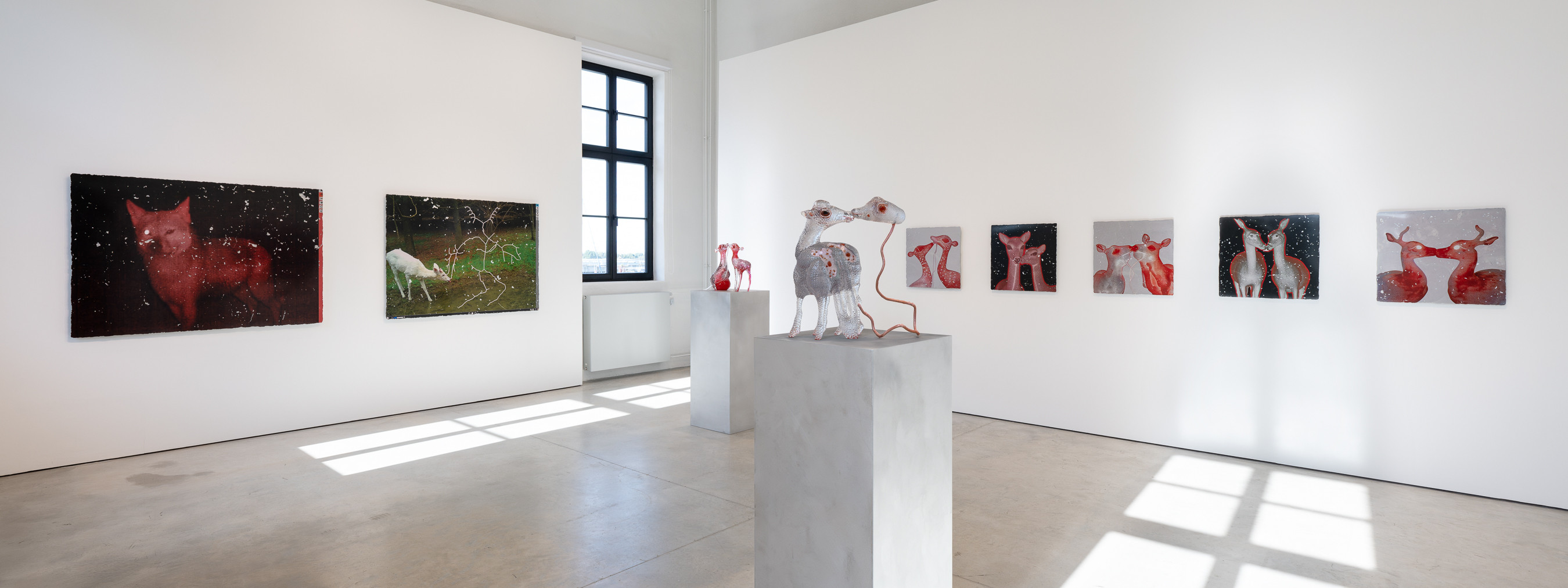
selected works
View: ,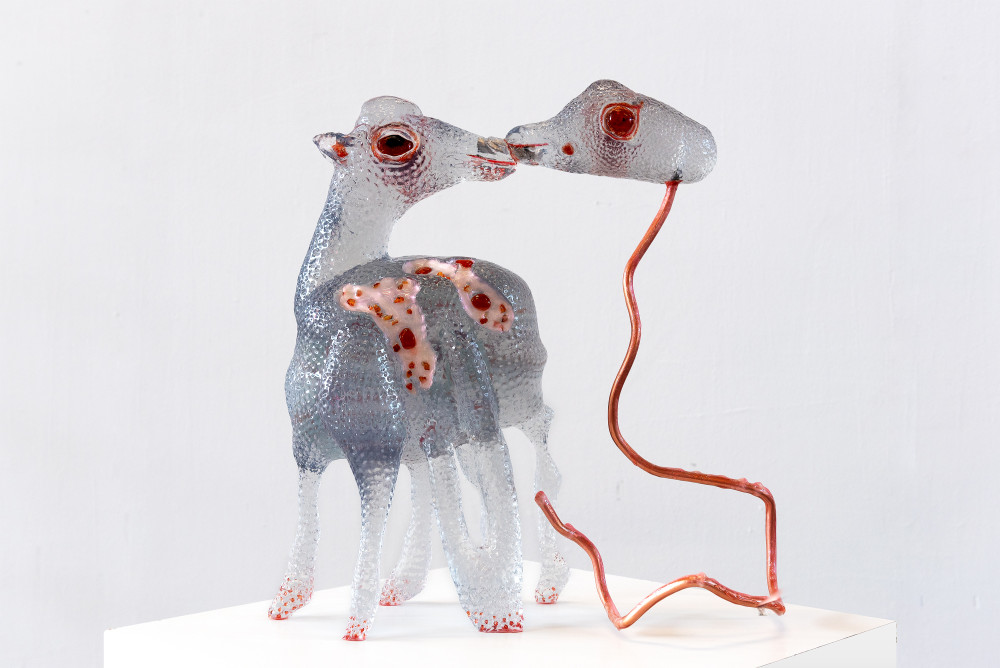
'Soft Approximation (Looking Glass Deers Kissing 03)'
polyurethane resin, UTR-8100 resin, UTR 3000 resin, water-based pigments, powder pigments, carnelian, quartz, aluminium wire 50×48×18cm 2023
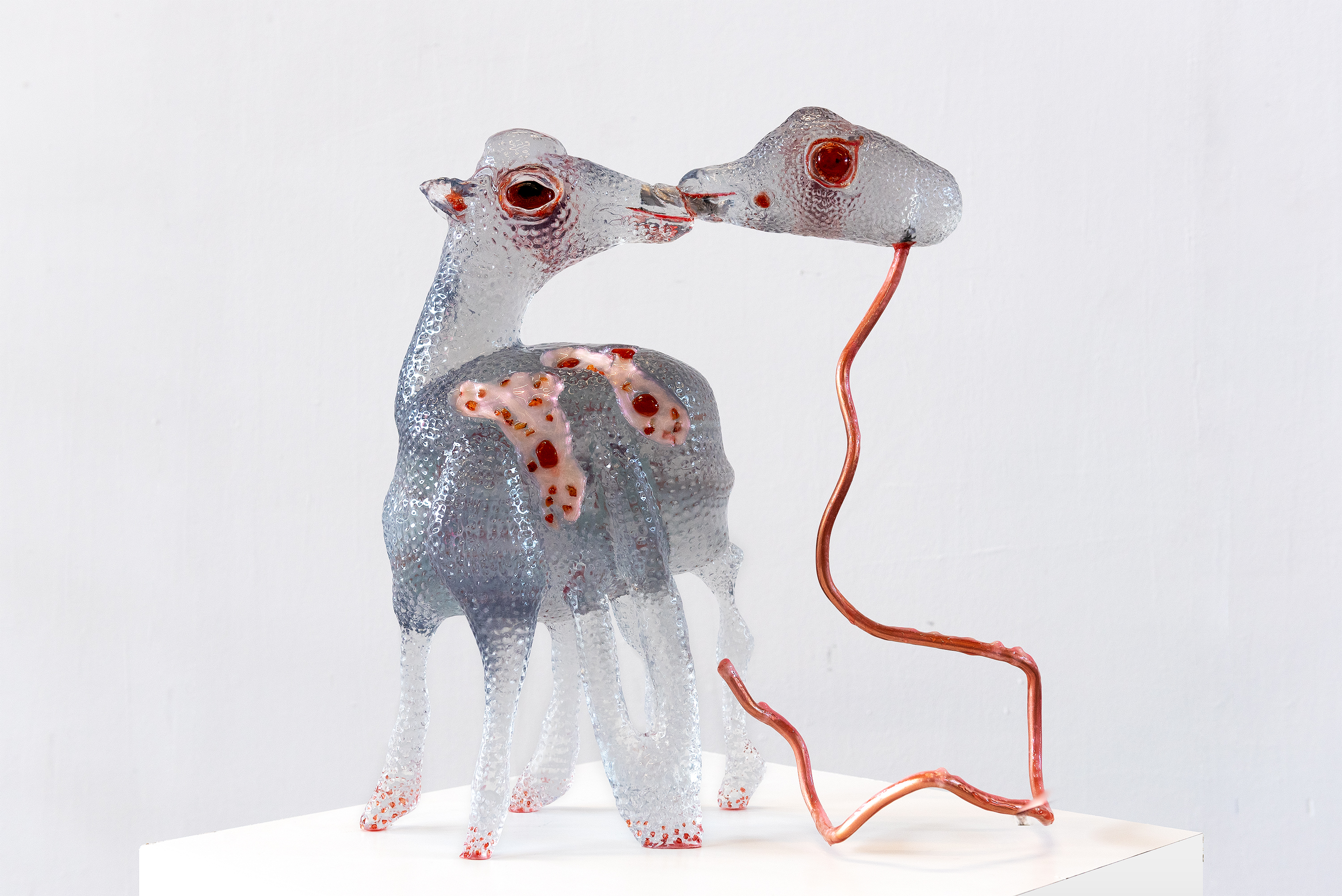
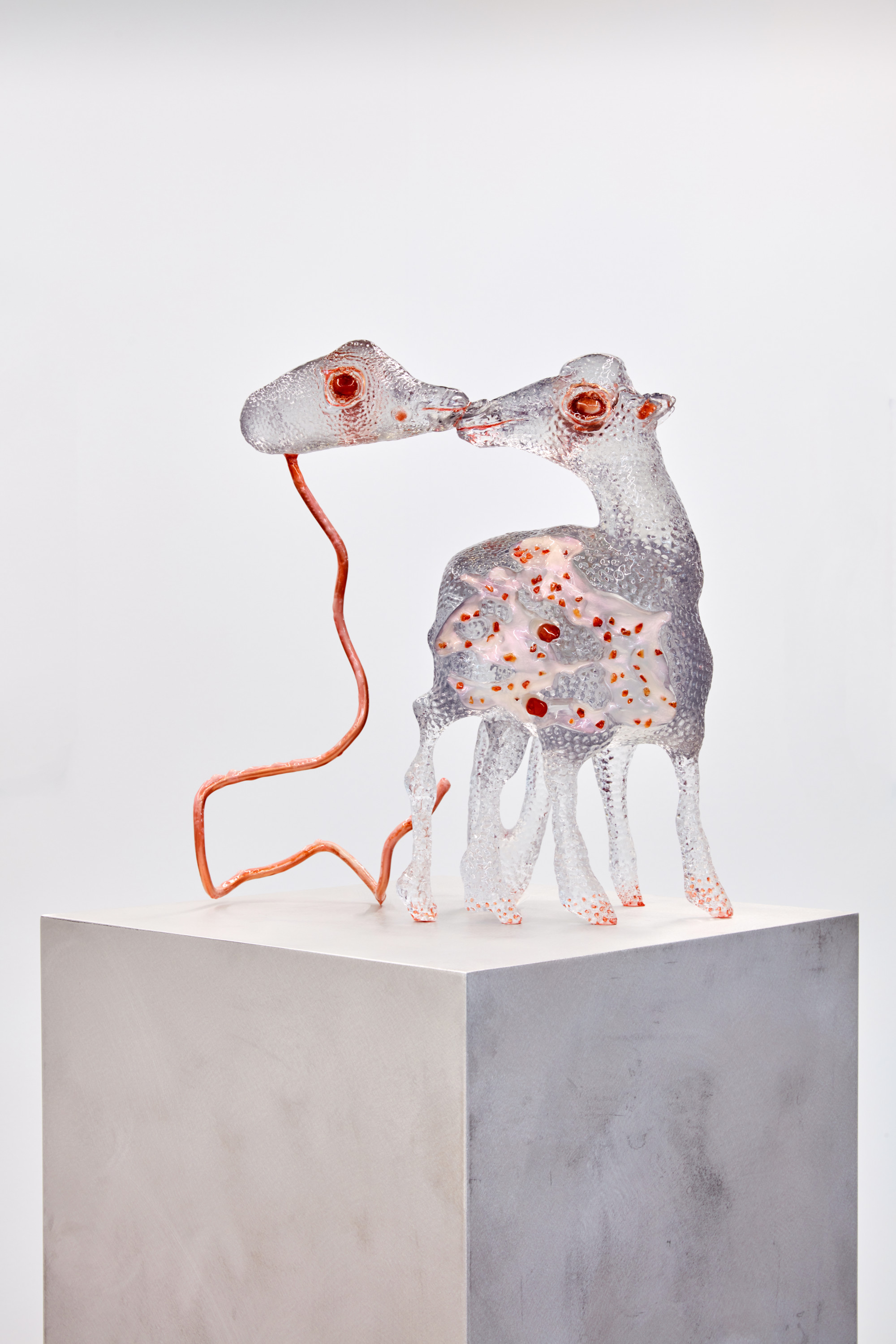
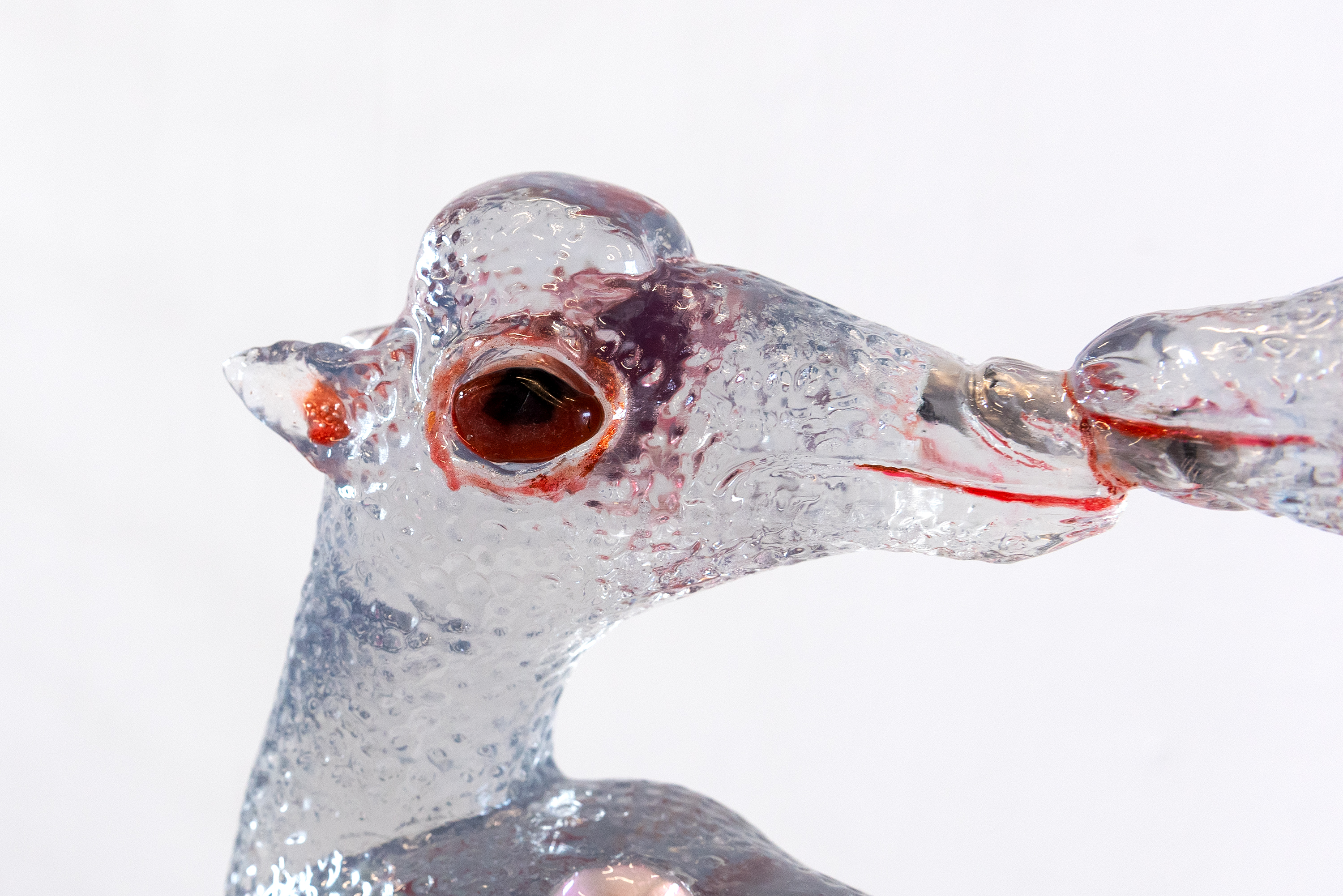
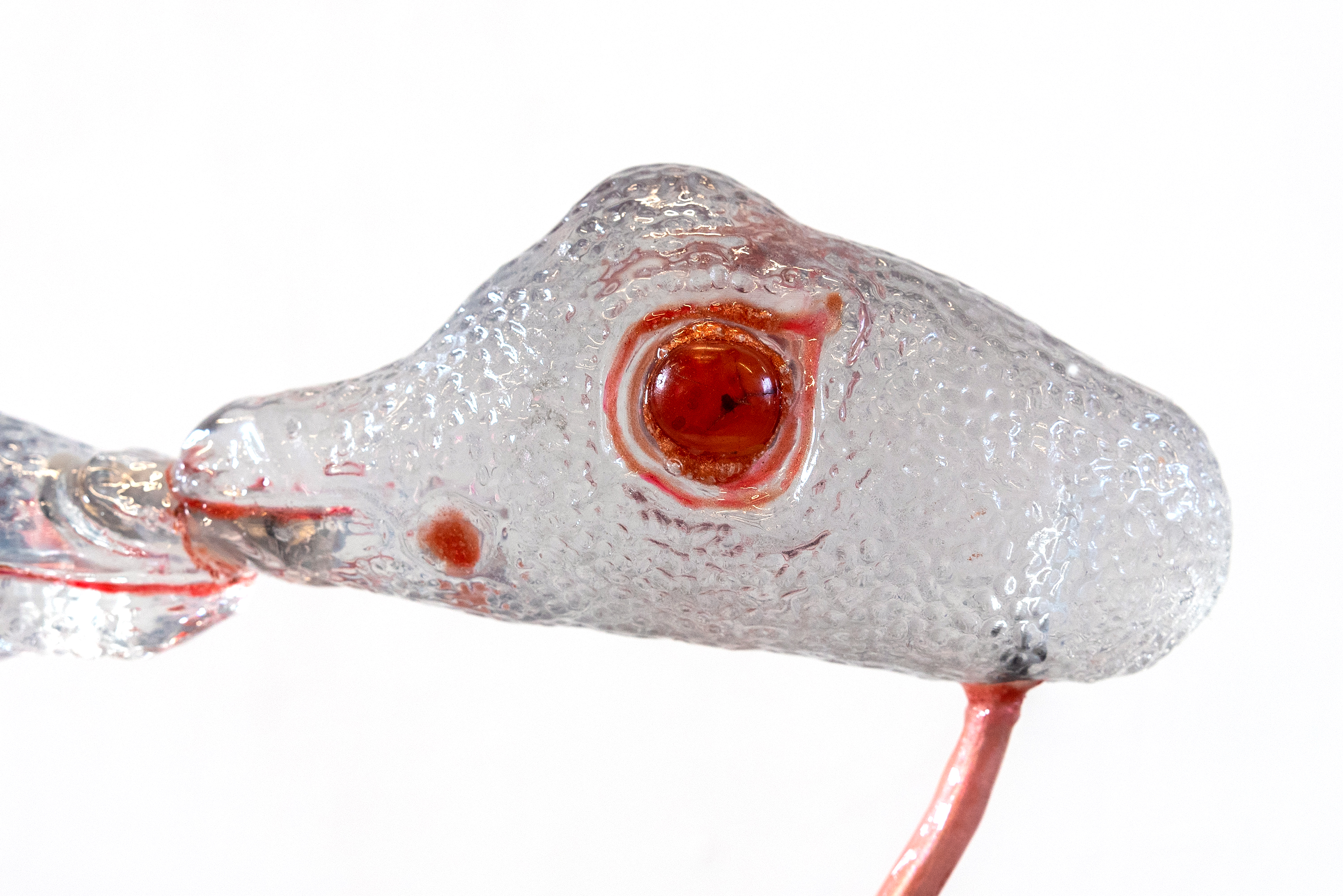
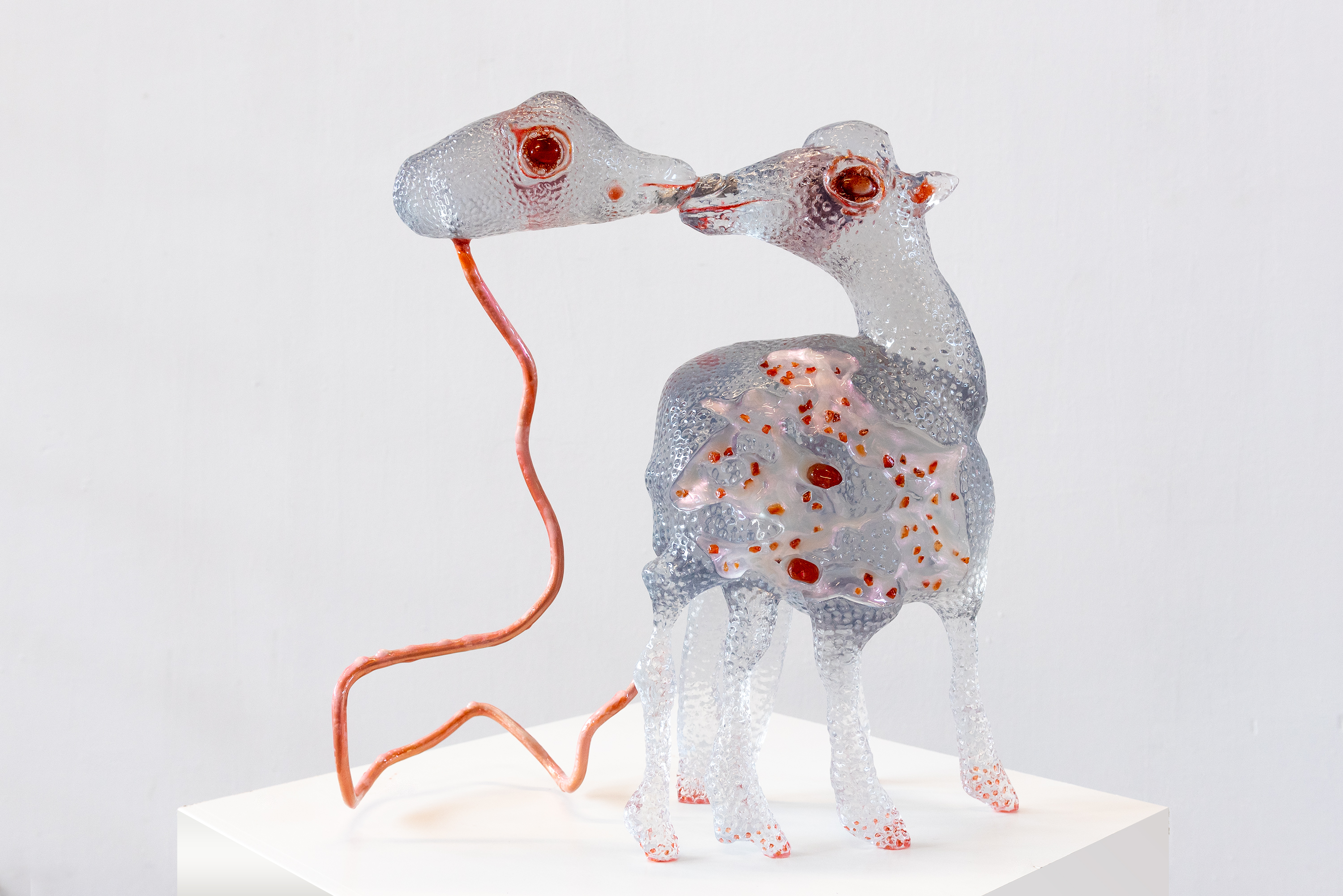

'Earthware (Wolf)'
UV print, epoxy clay, nail polish, aluminium frame 118×156×3cm 2023
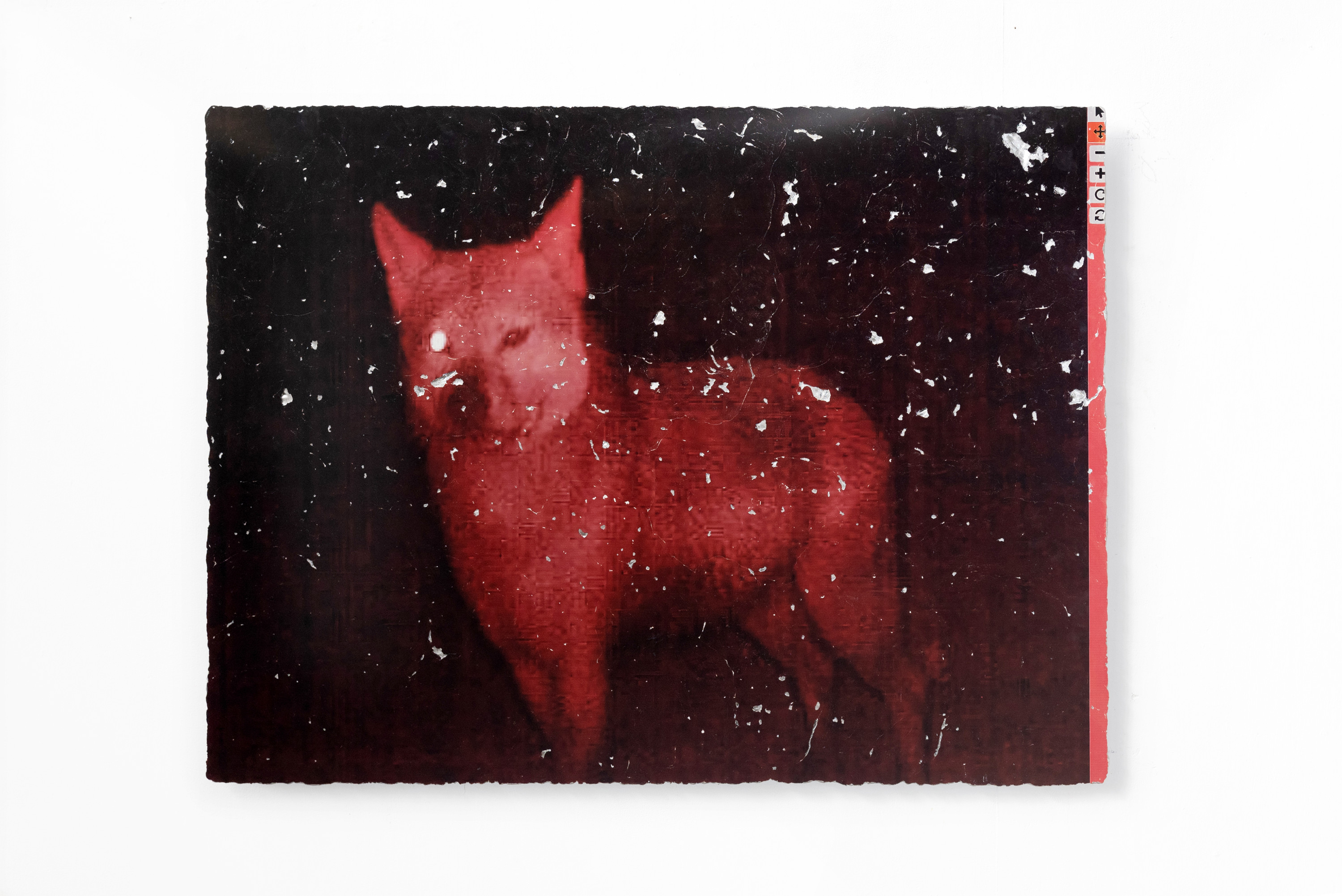
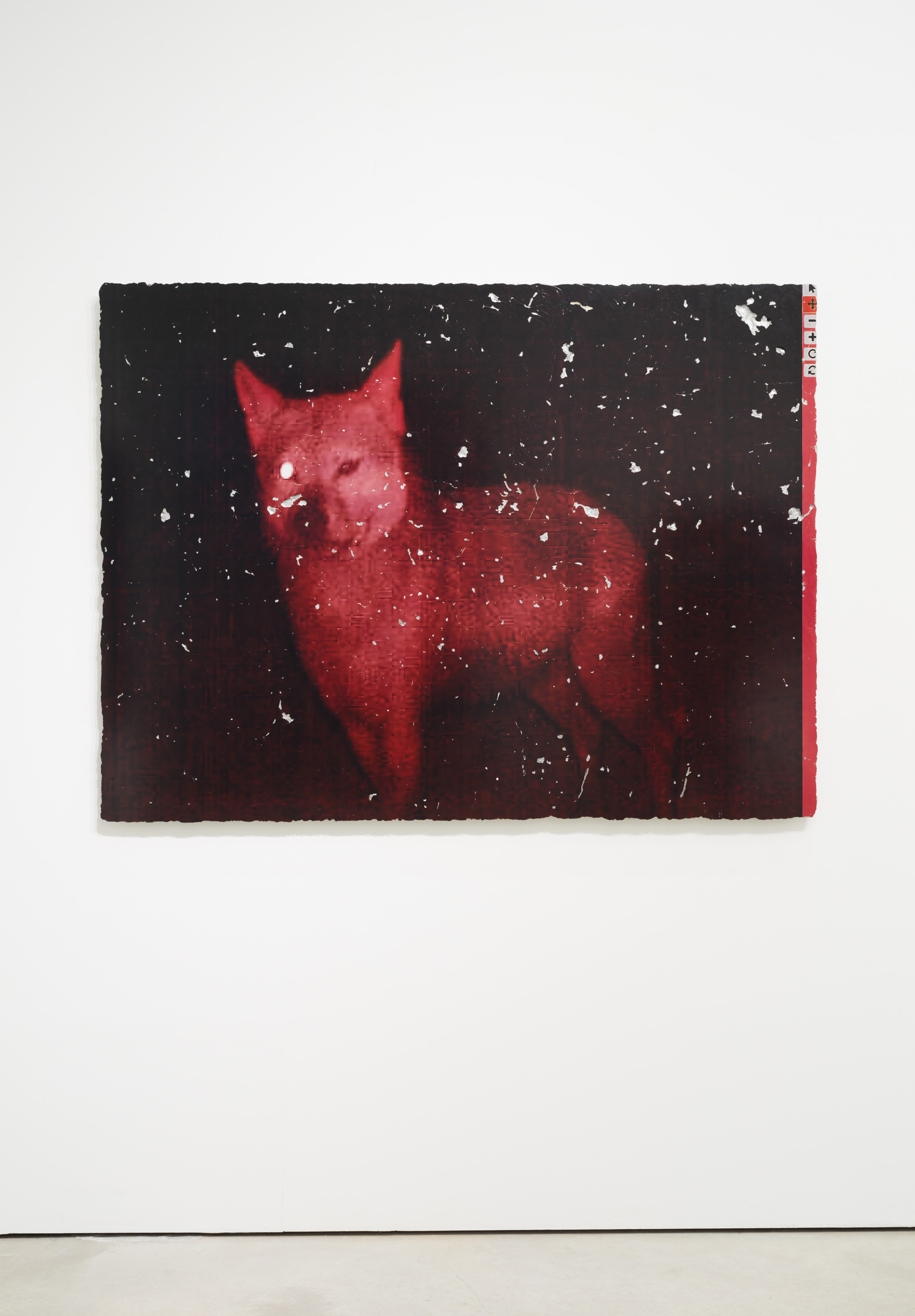
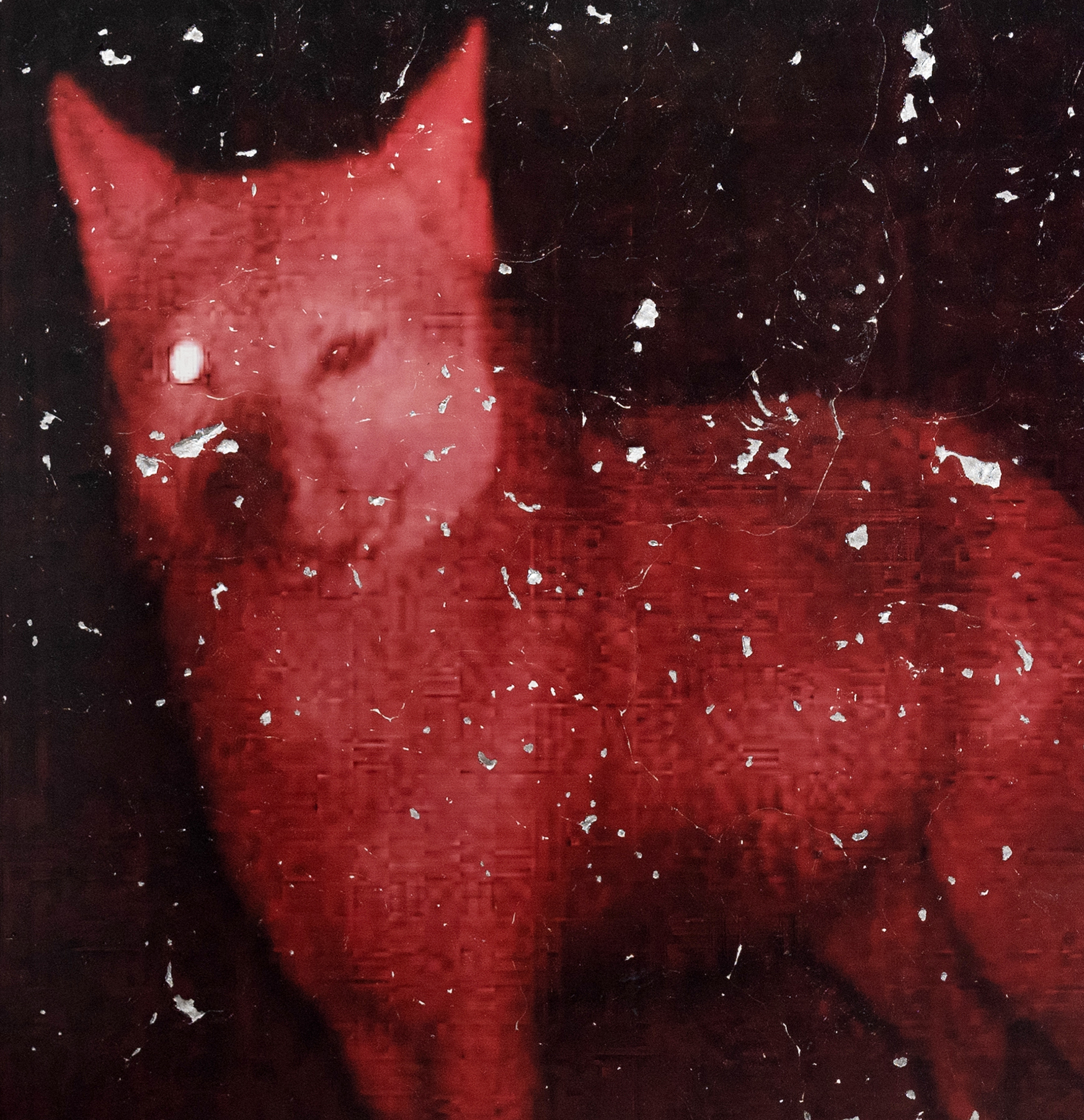

'Earthware (Albino Deer), in collaboration with PWR'
UV print, epoxy clay, nail polish, aluminium frame 118×157×3cm 2023
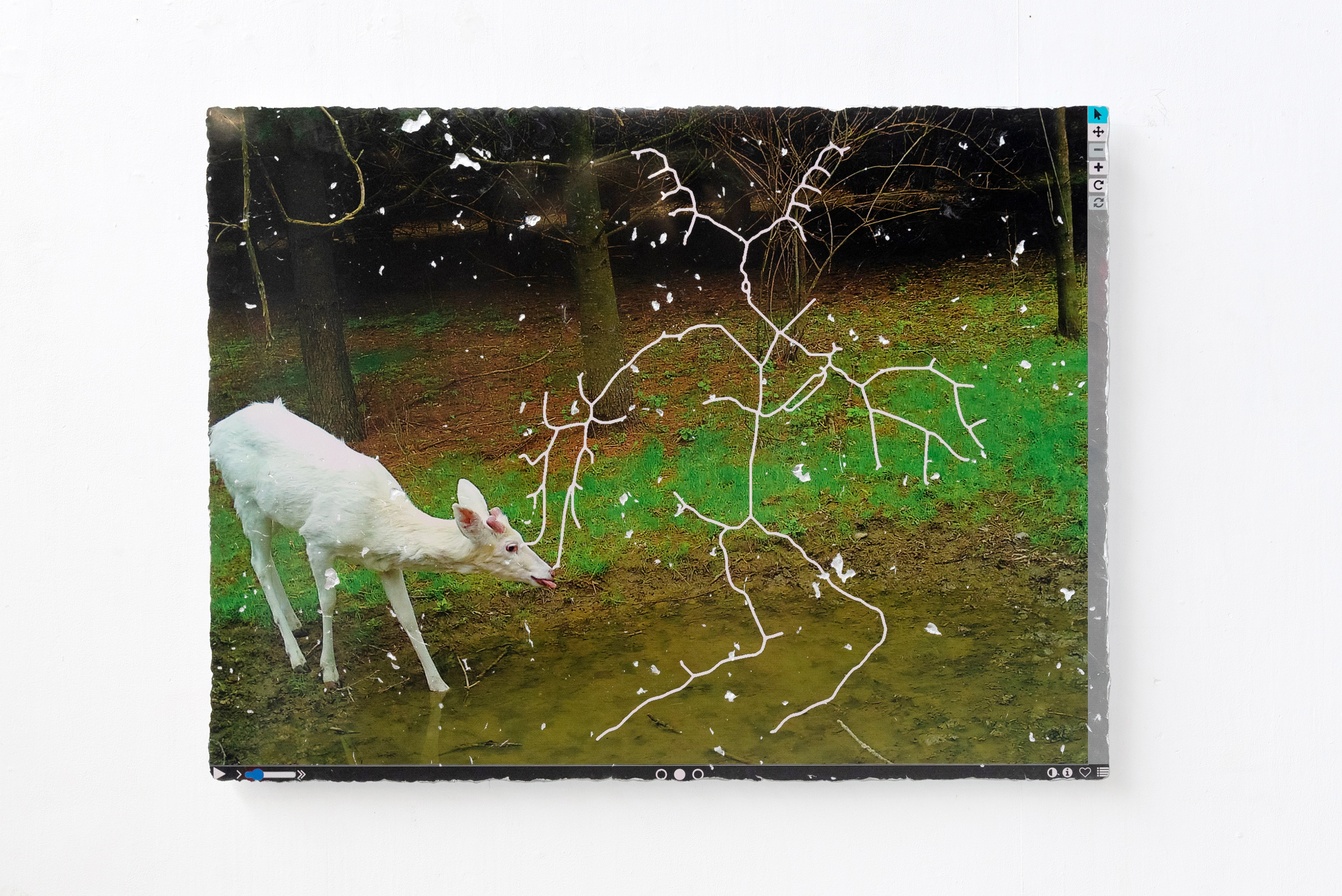
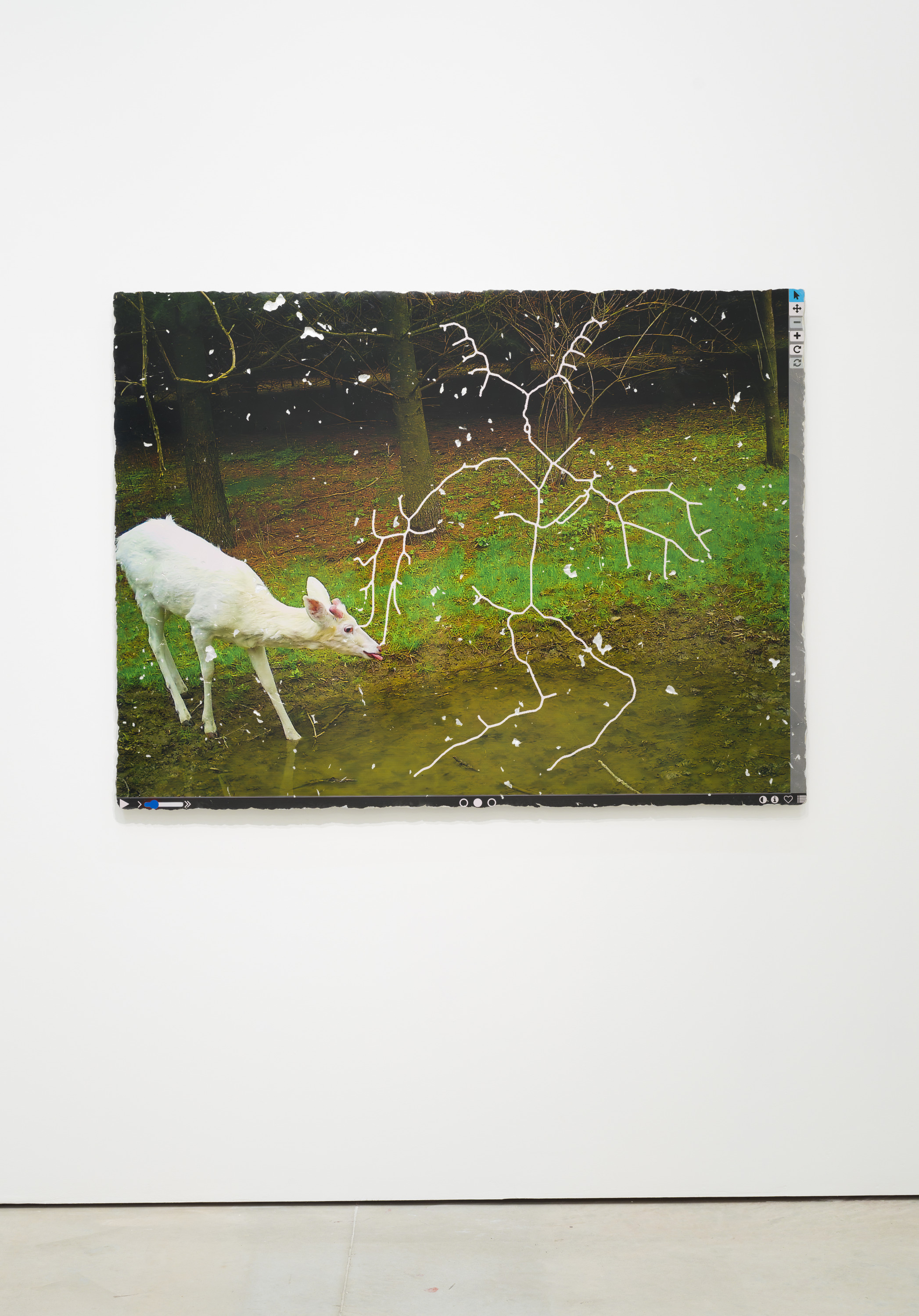
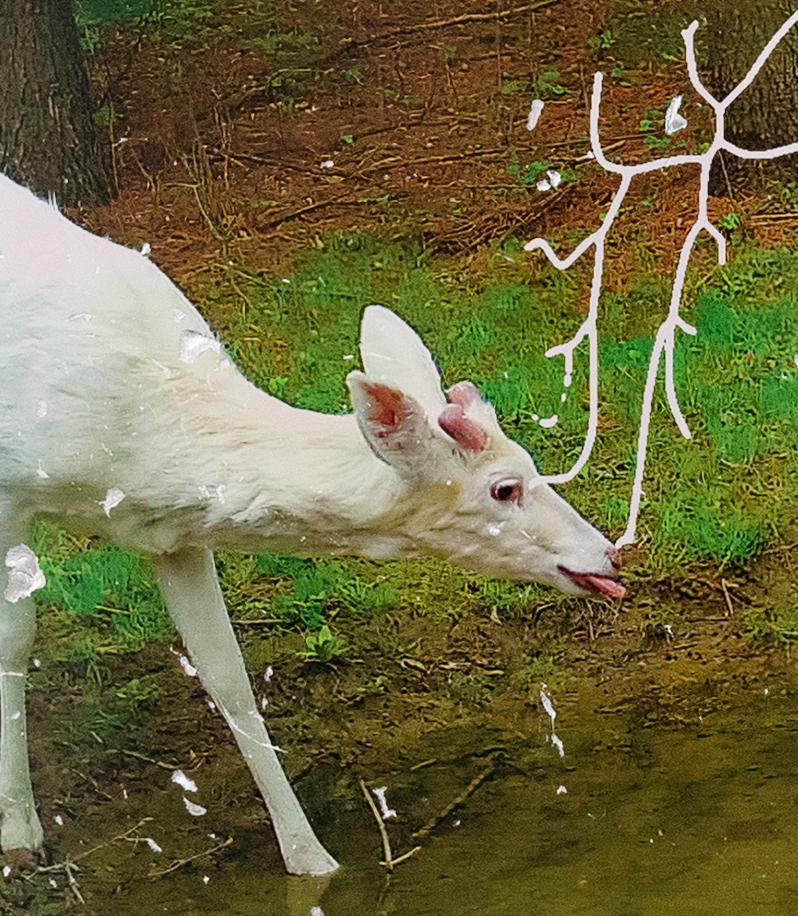
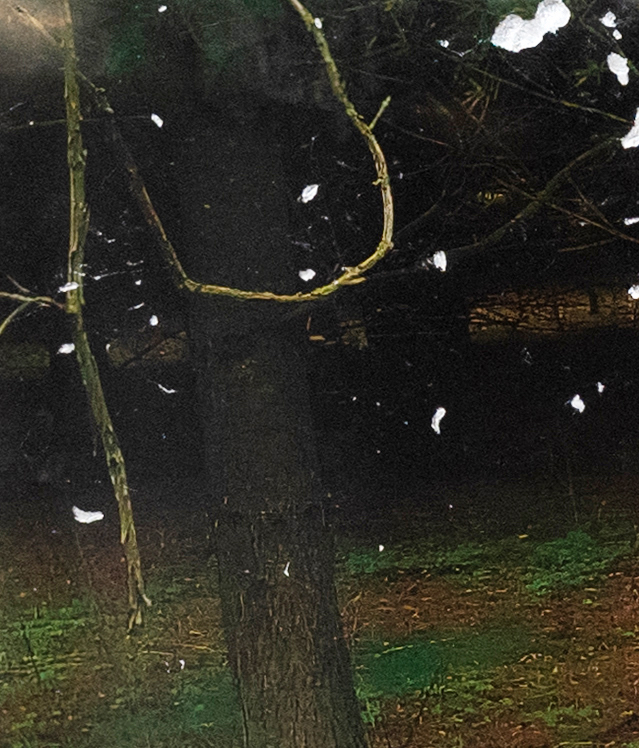
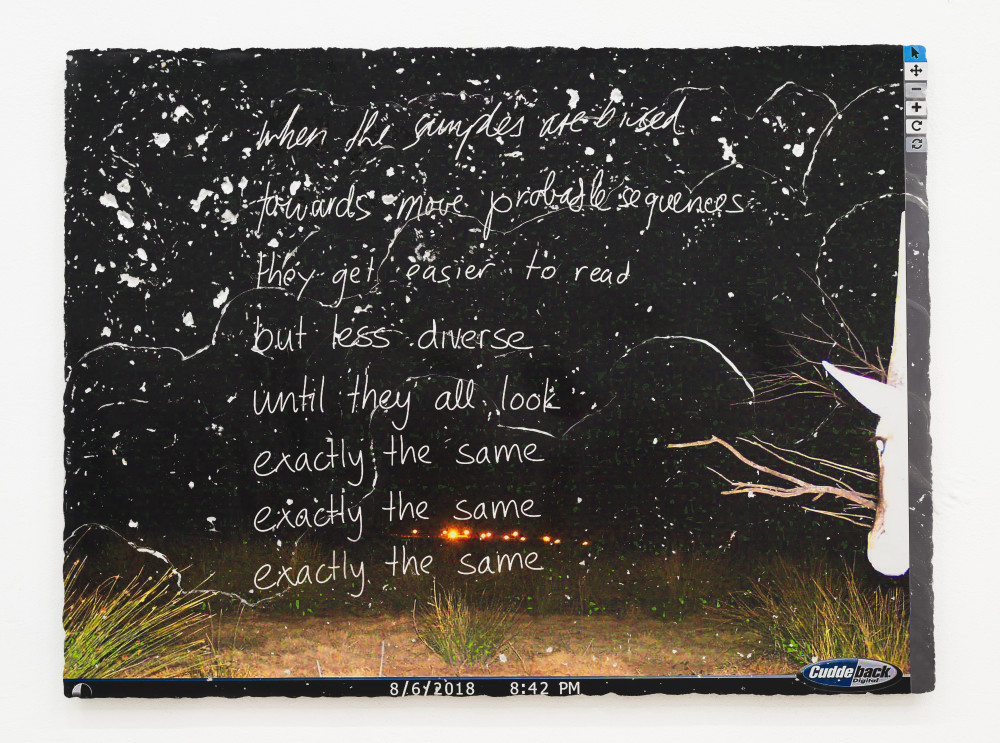
'Earthware (8/6/2018, When The Samples Are Biased... )'
UV print, epoxy clay, nail polish, aluminium frame 122×163×3cm 2023
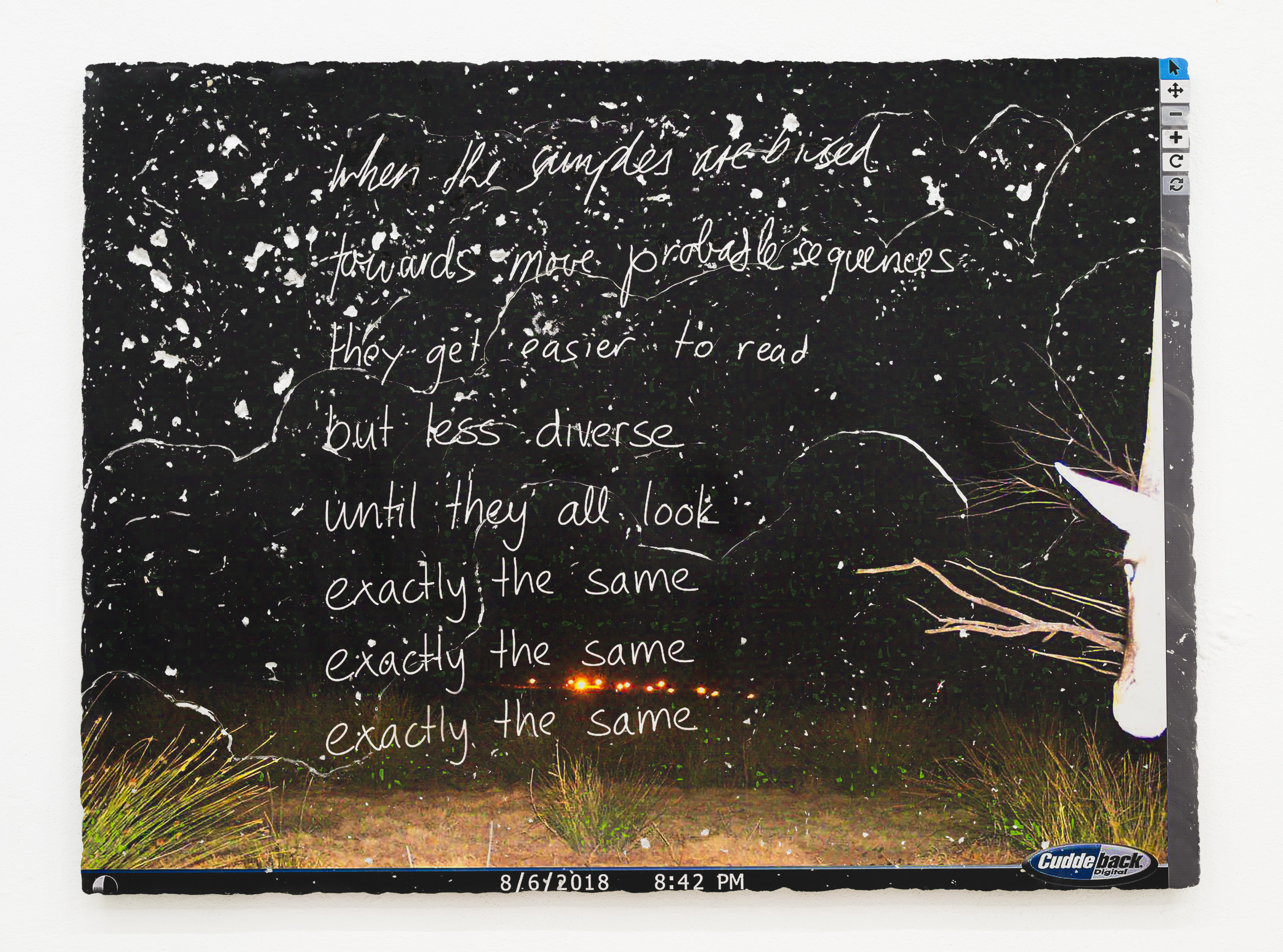
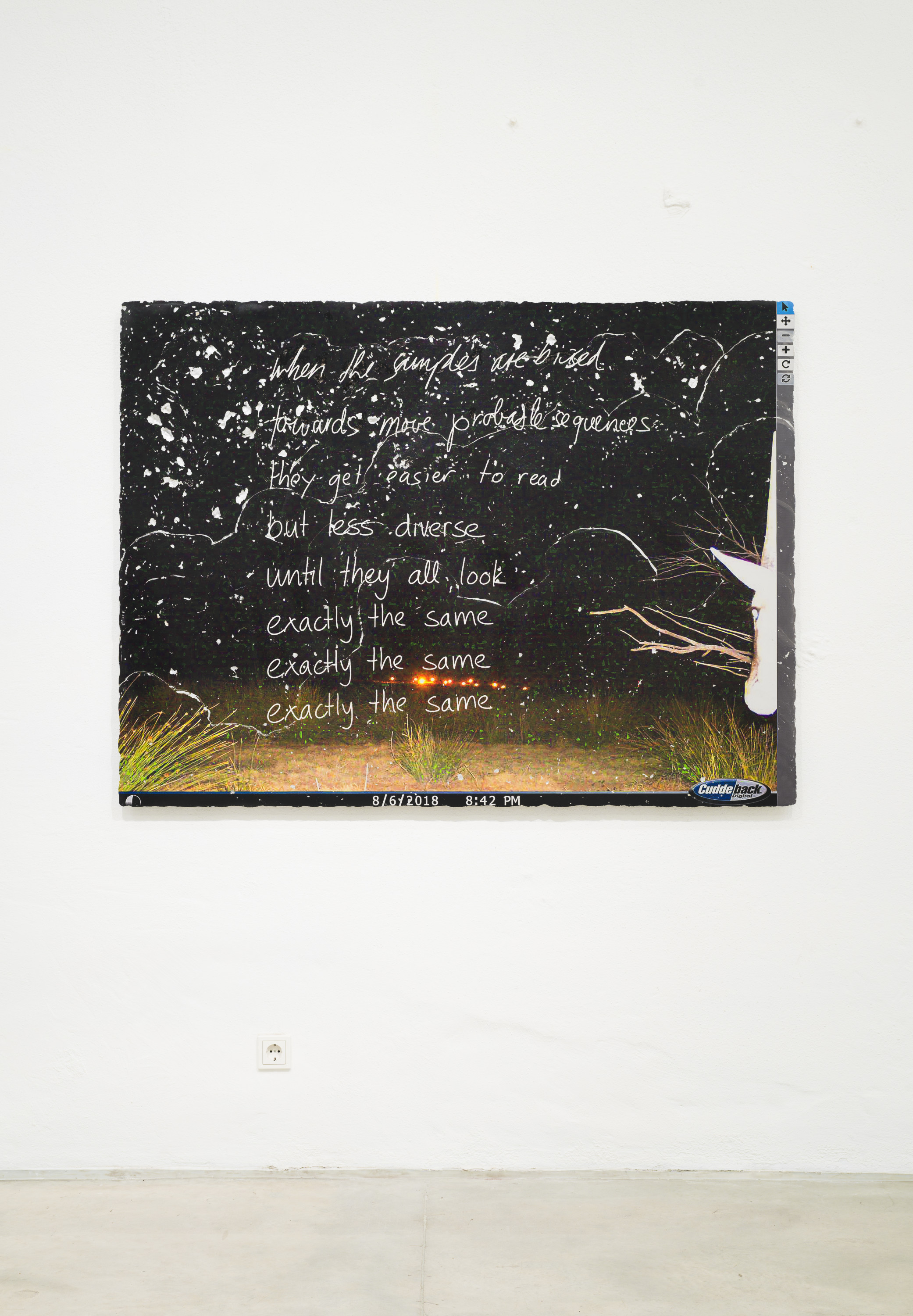
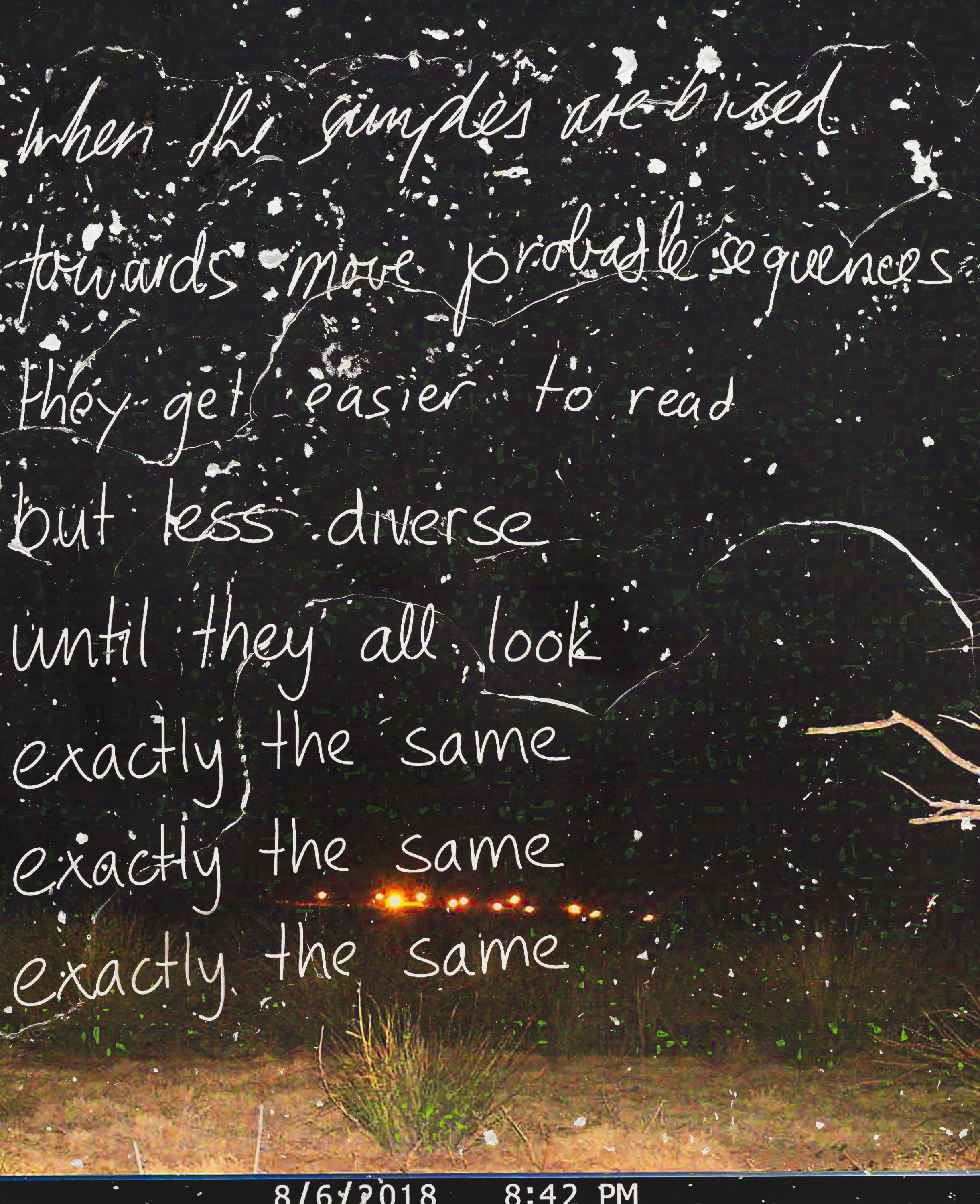
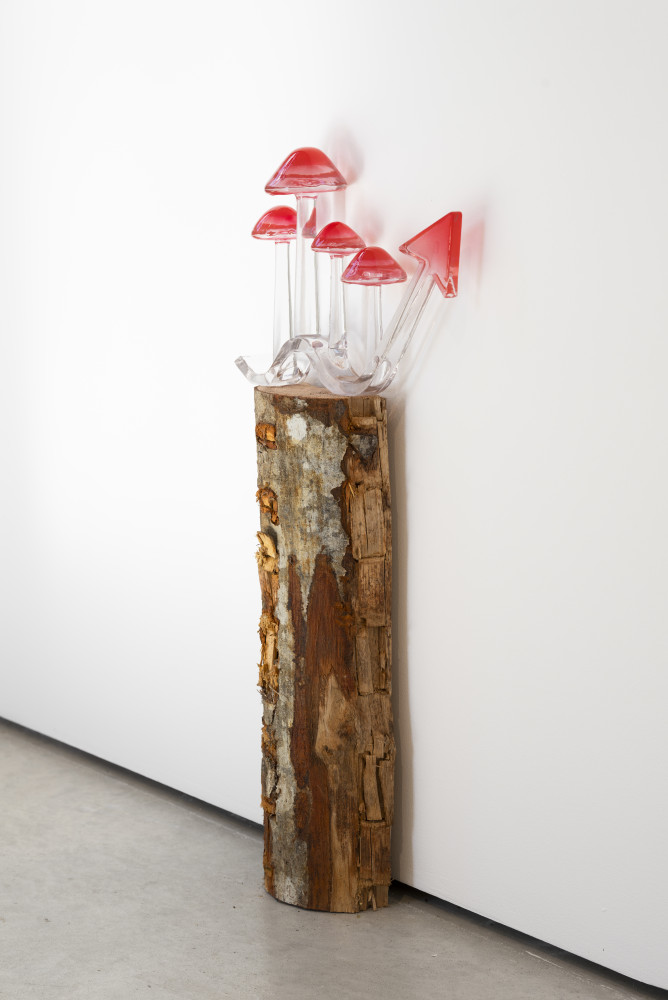
'Soft Approximation (Fungal Growth 02)'
polyurethane resin, UTR-8100 resin, water-based pigments 18×22×8cm 2023
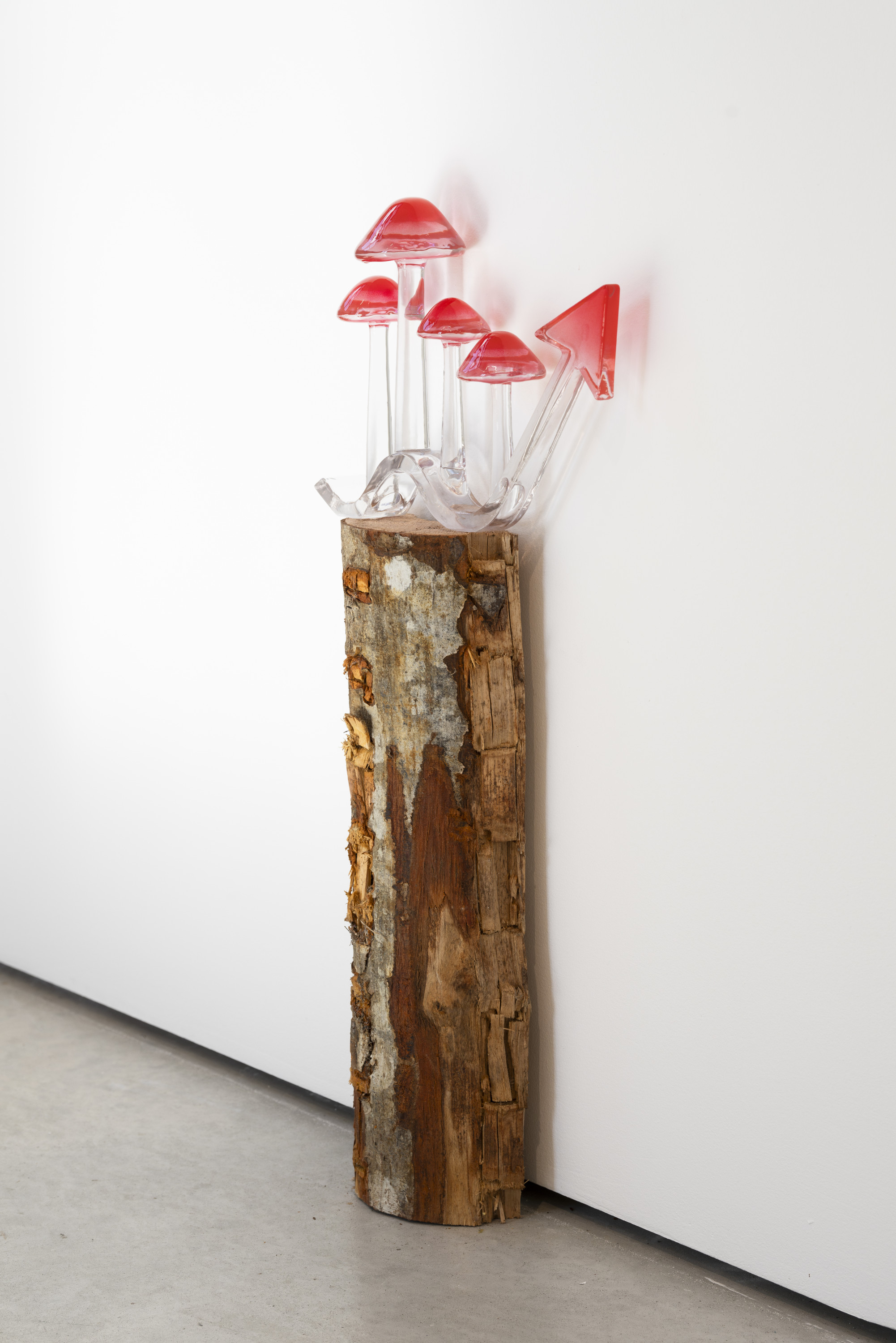
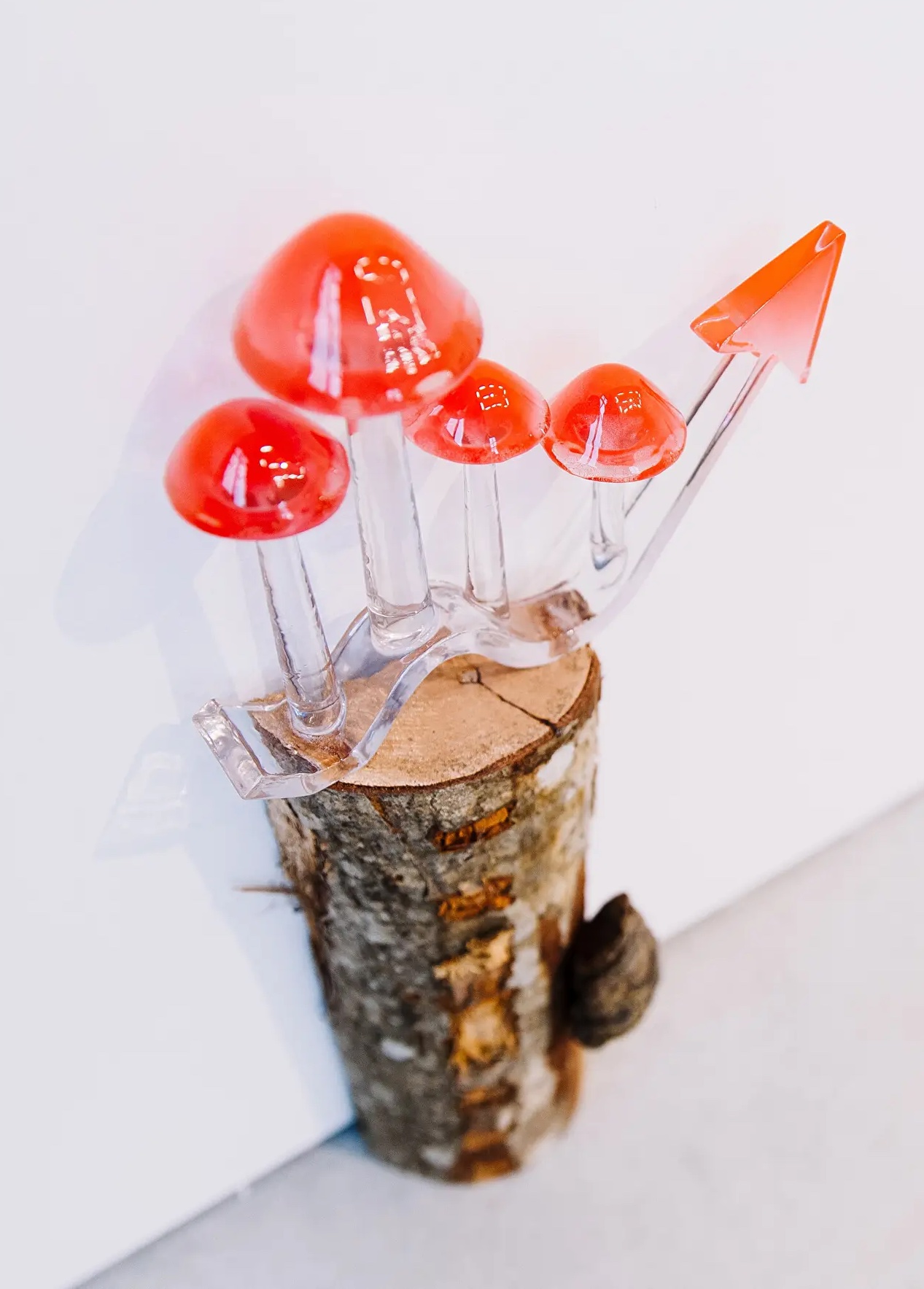
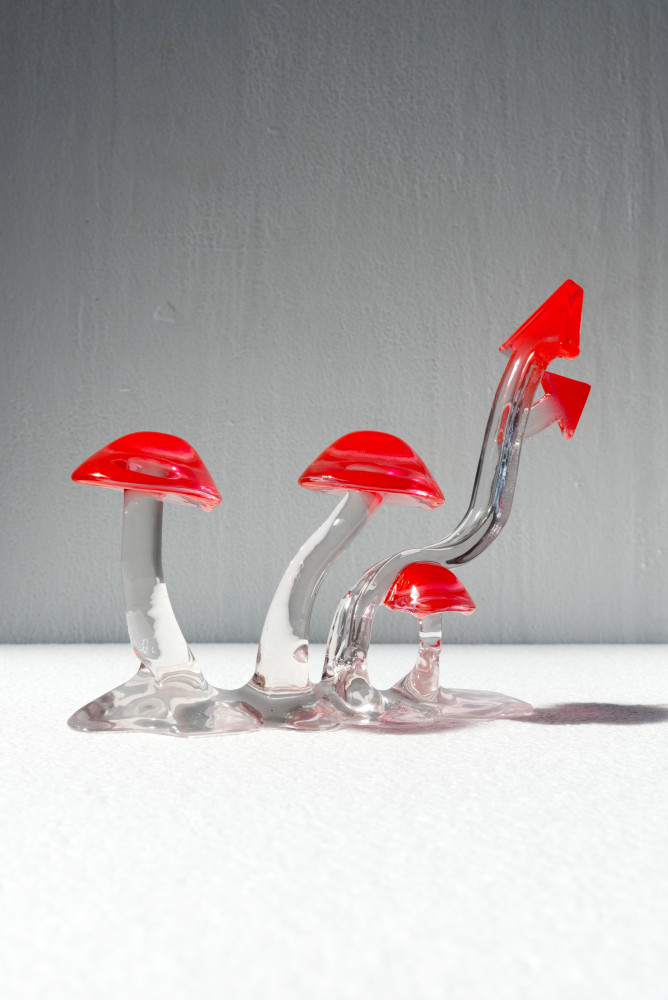
'Soft Approximation (Fungal Growth 01)'
polyurethane resin, UTR-8100 resin, water-based pigments 18×24×7cm 2023
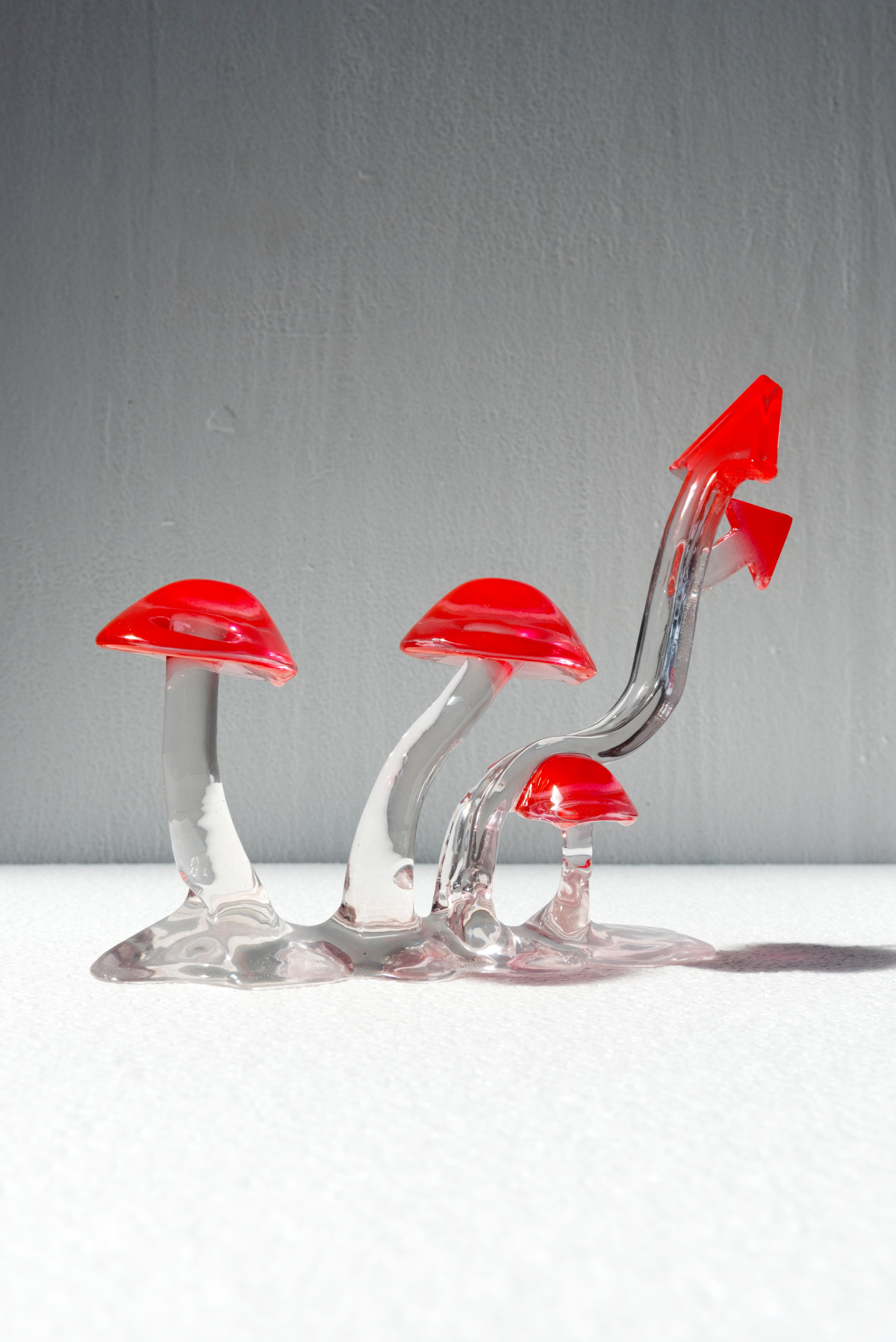
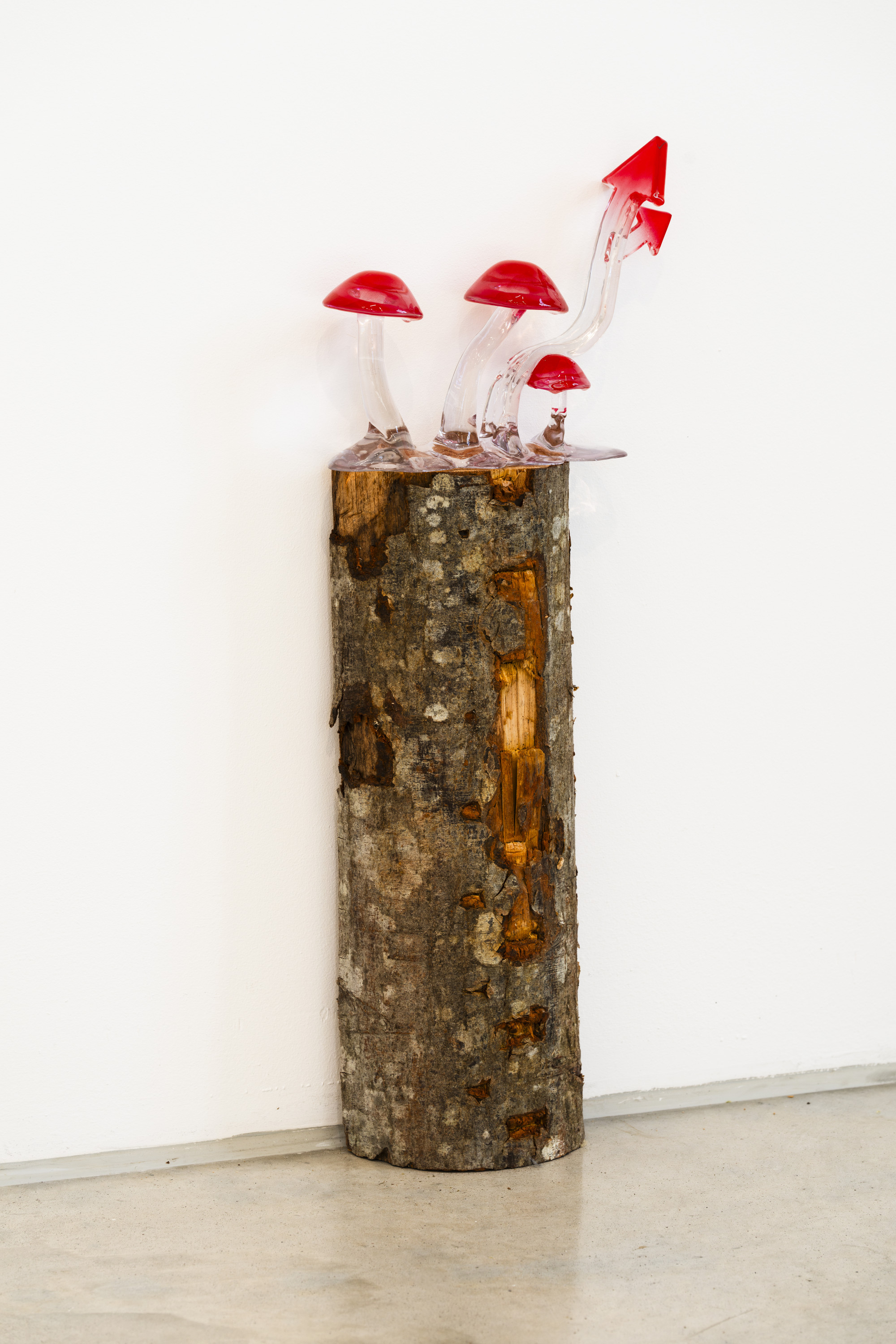
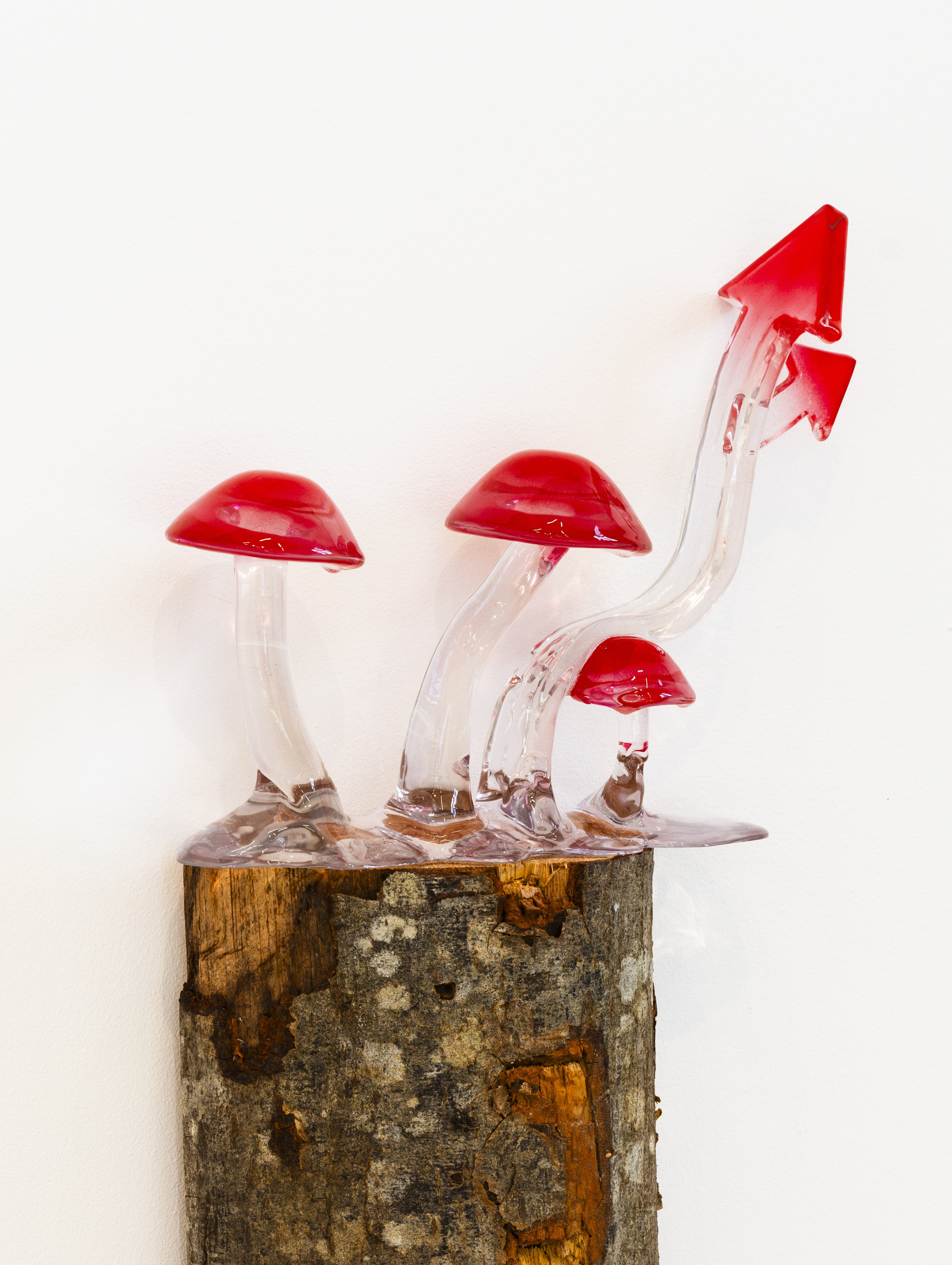
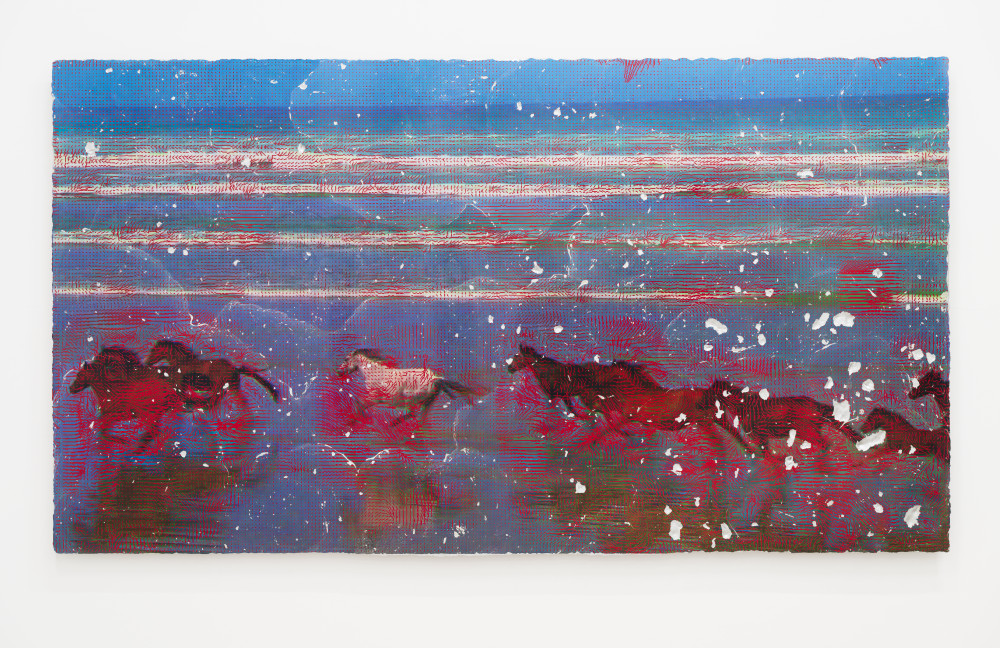
'Earthware (Optical Flow Horses)'
UV print, epoxy clay, nail polish, aluminium frame 101×184×3cm 2023
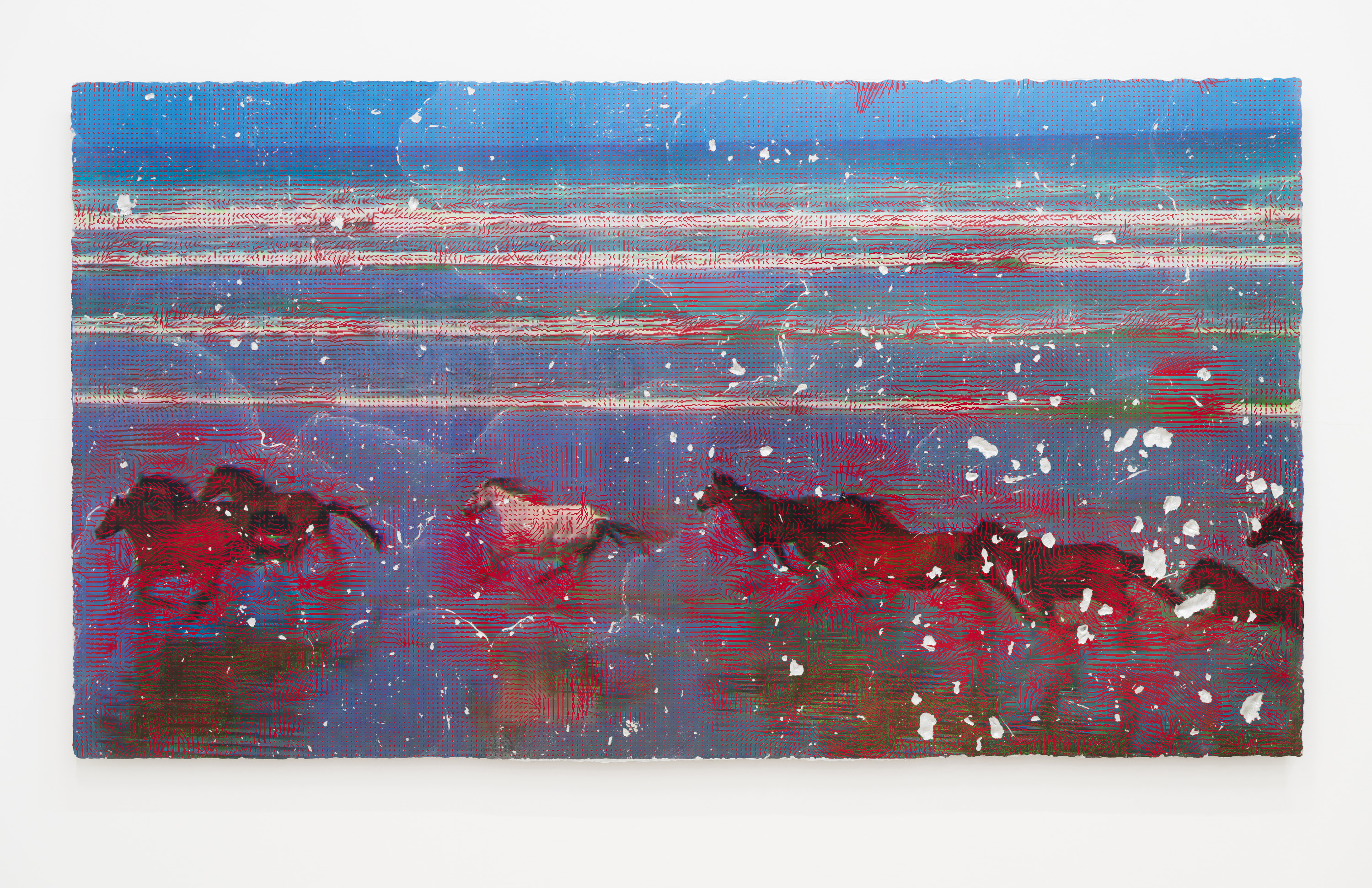
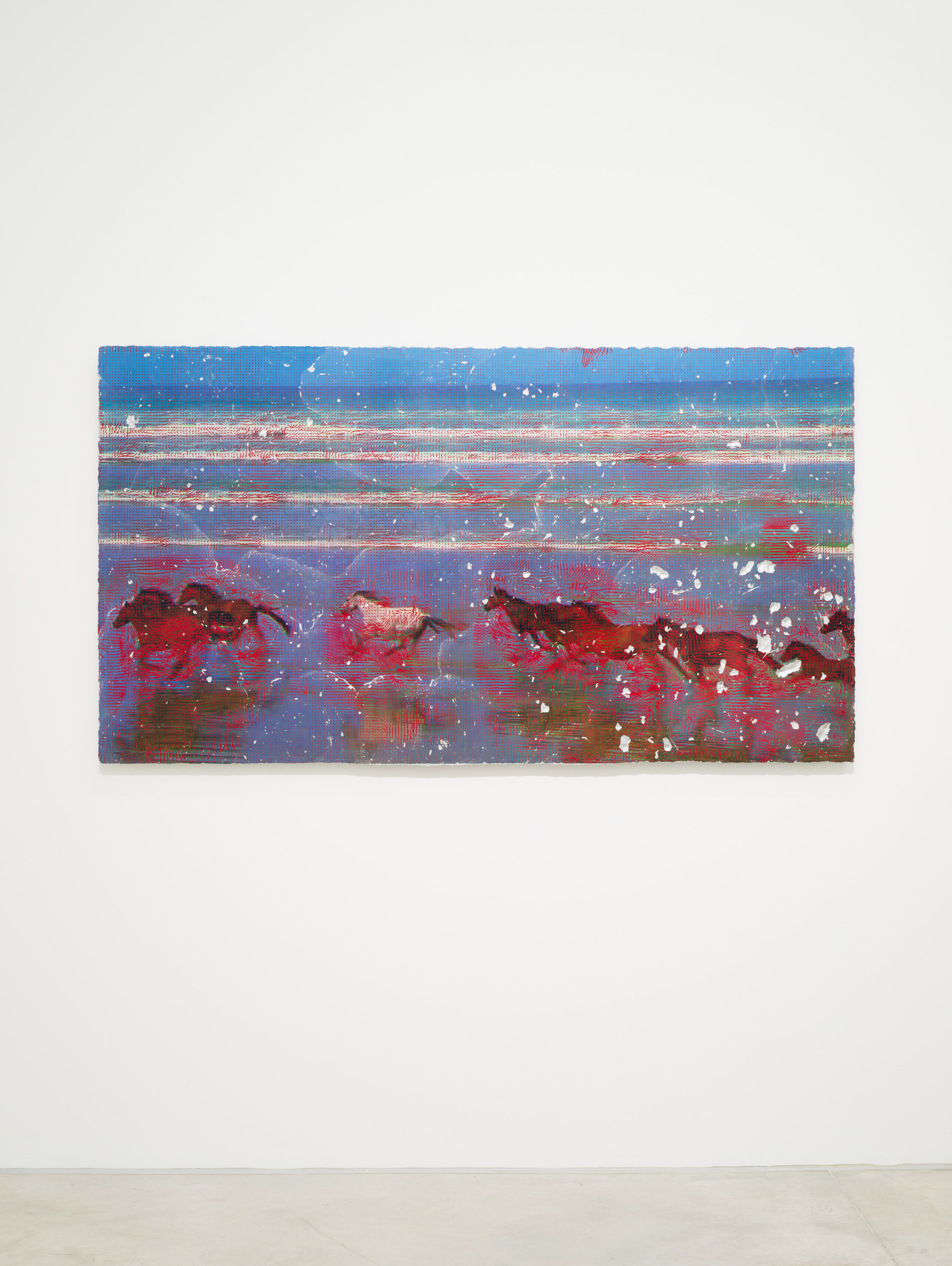
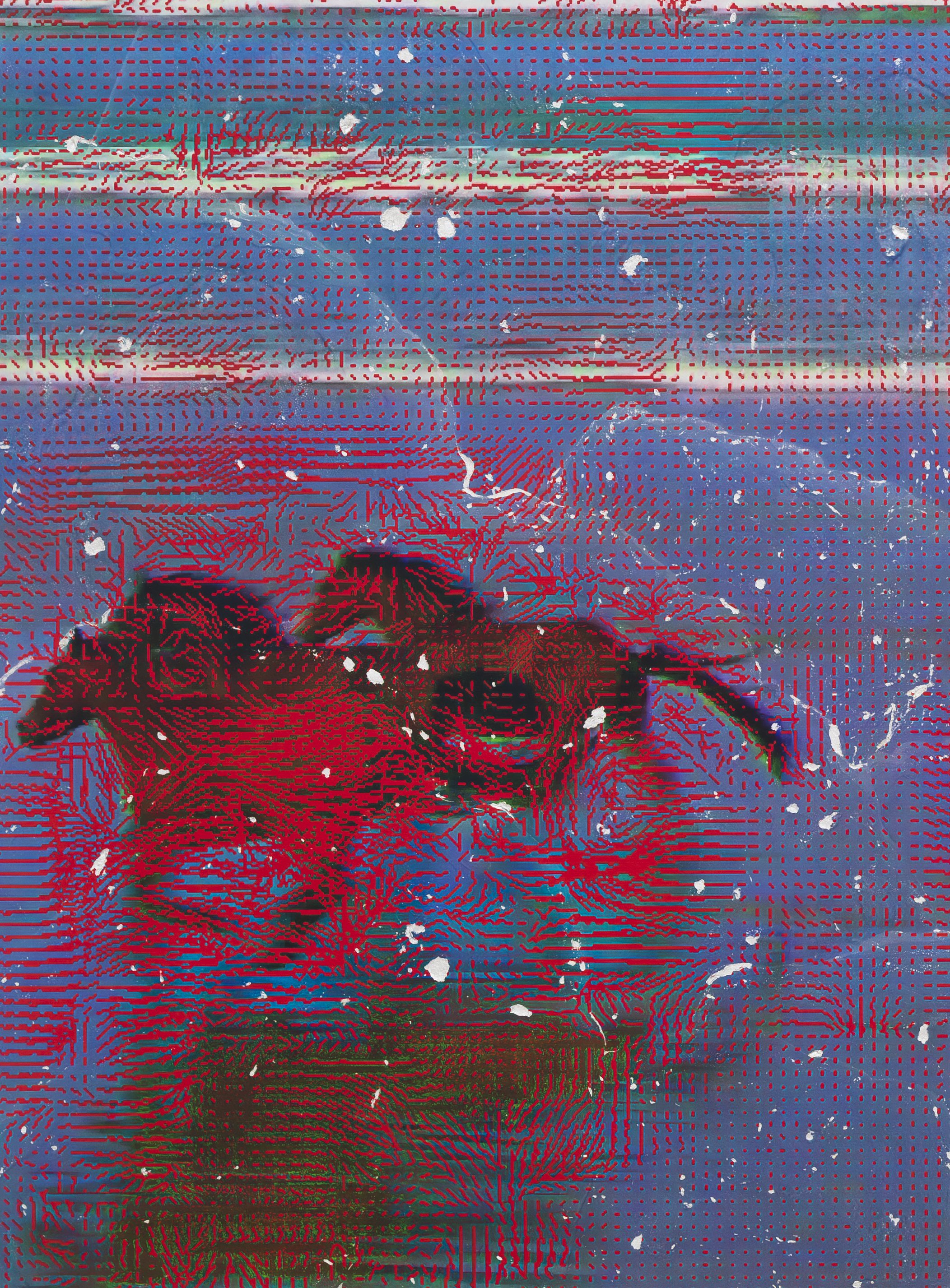
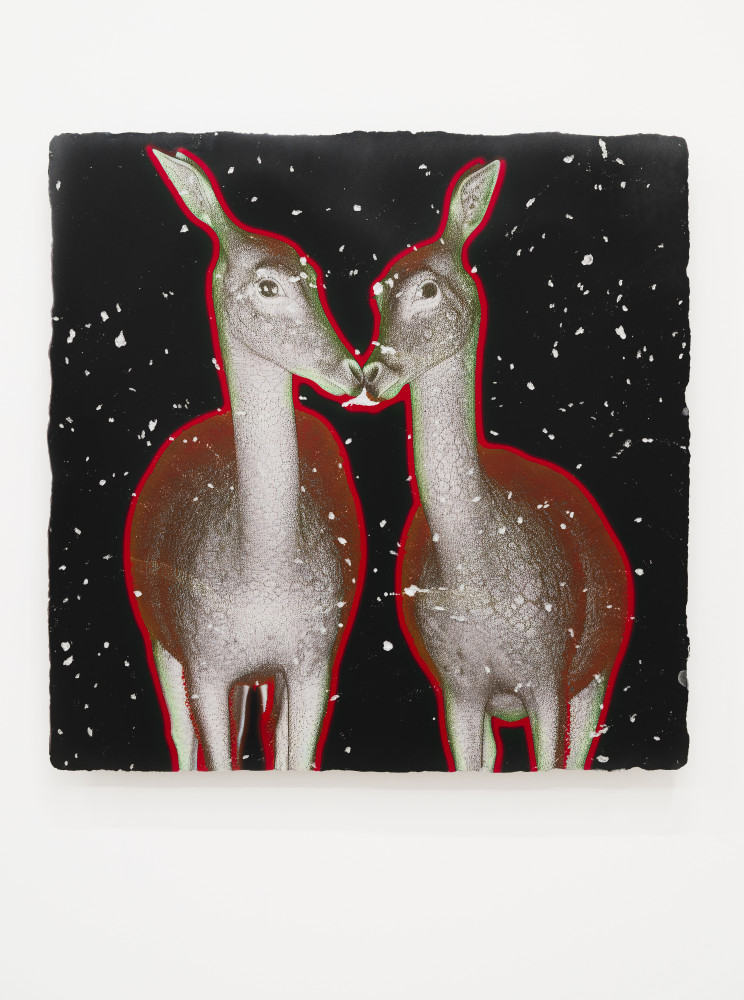
'Earthware (Random Forest, Deer Kiss 01)'
UV print, epoxy clay, nail polish, aluminium frame 60×60×3cm 2023
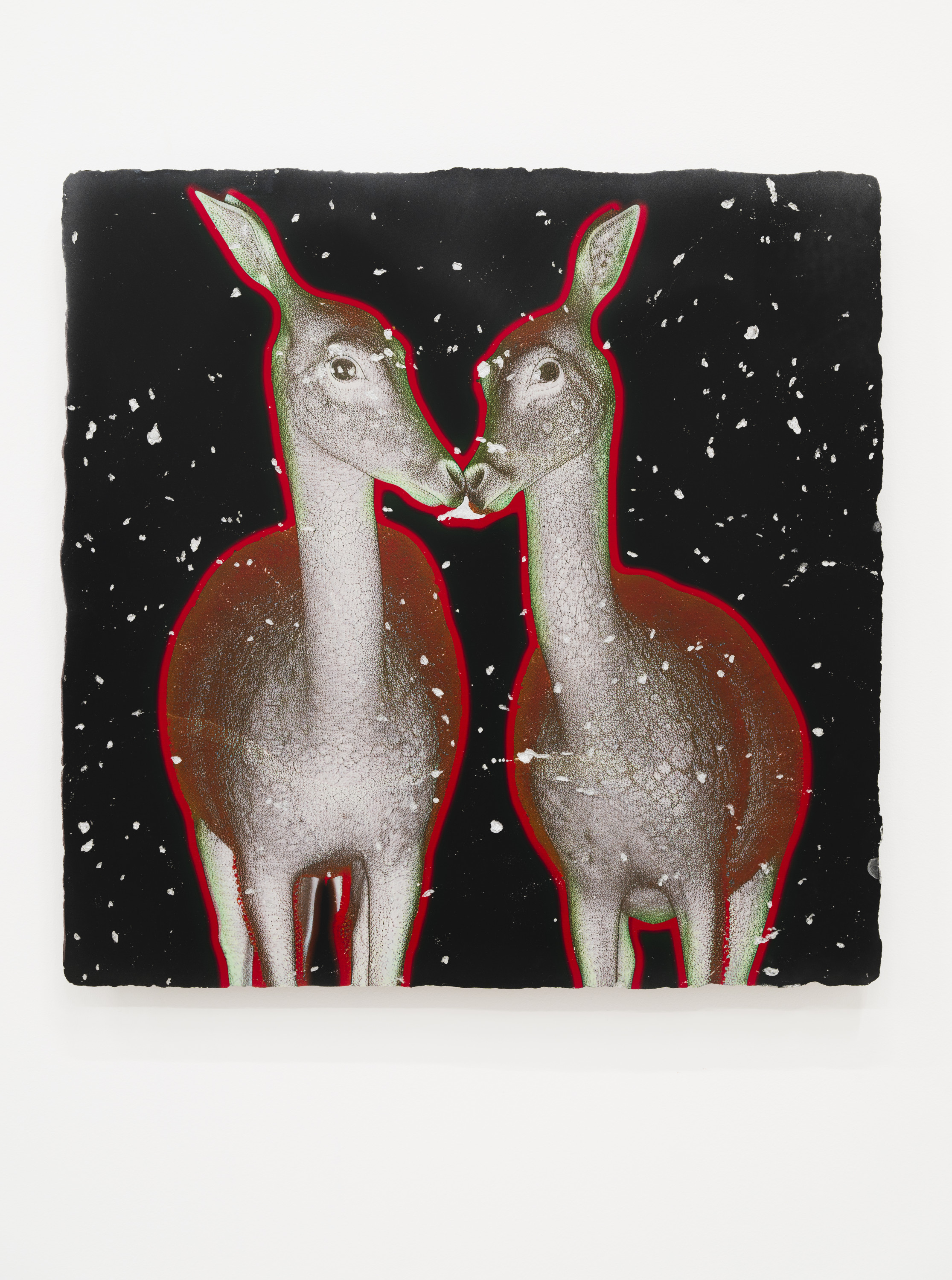
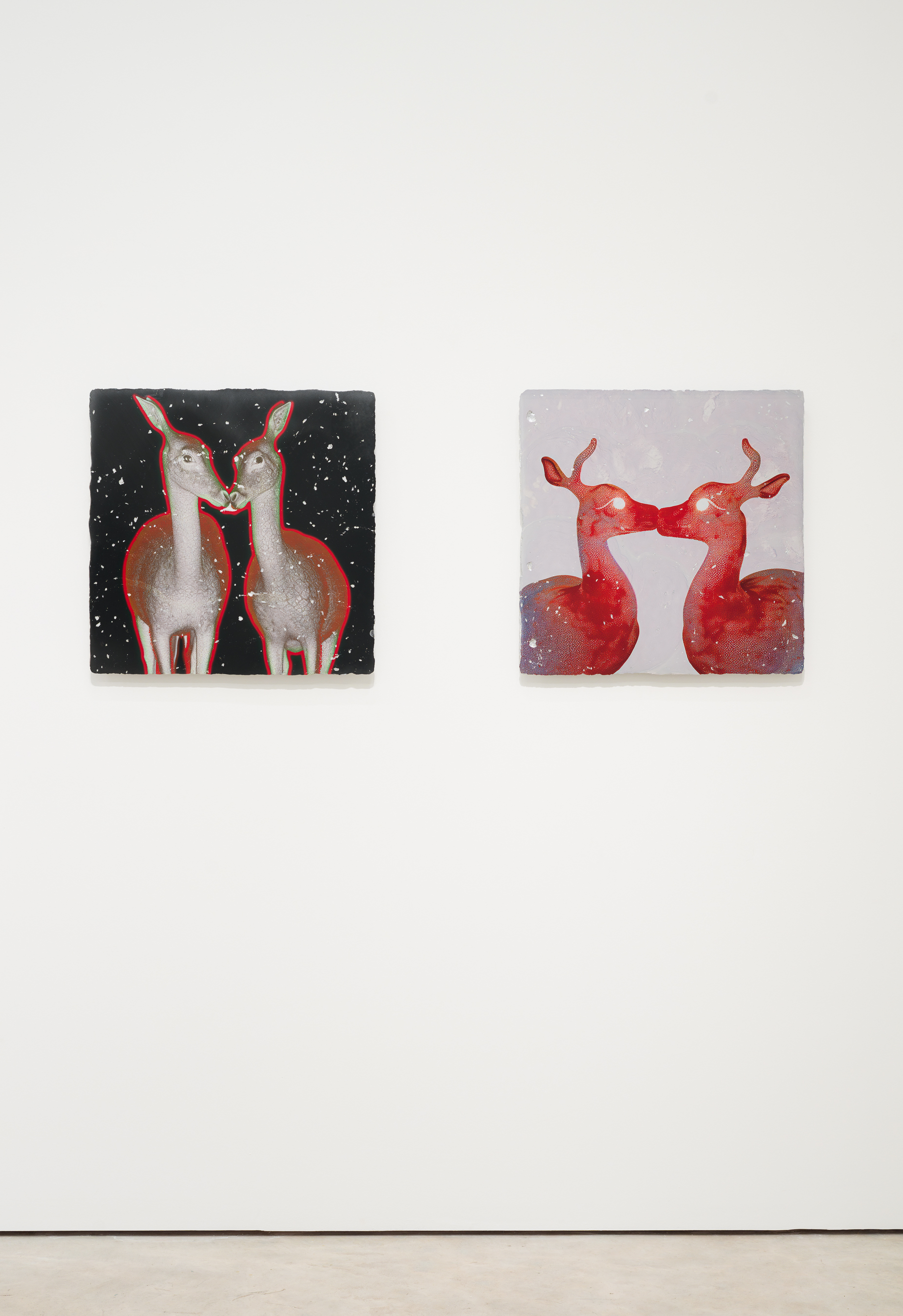
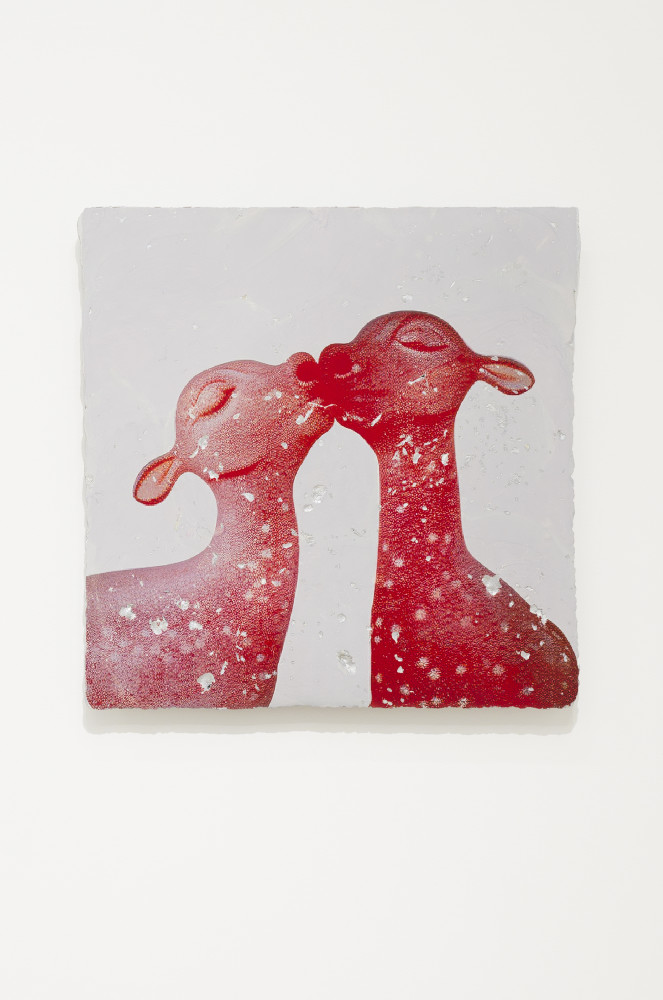
'Earthware (Random Forest, Deer Kiss 02)'
UV print, epoxy clay, nail polish, aluminium frame 60×60×3cm 2023
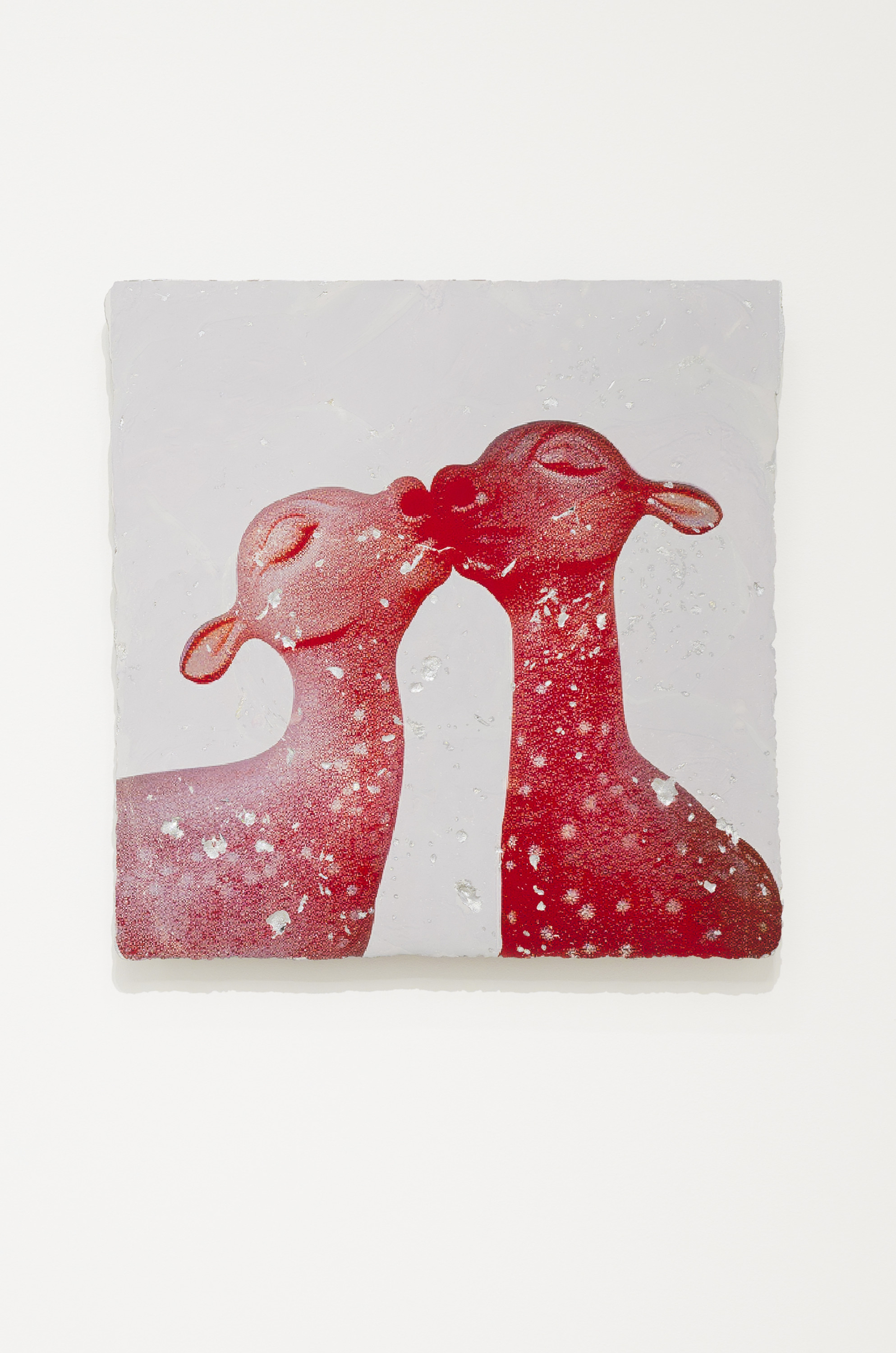
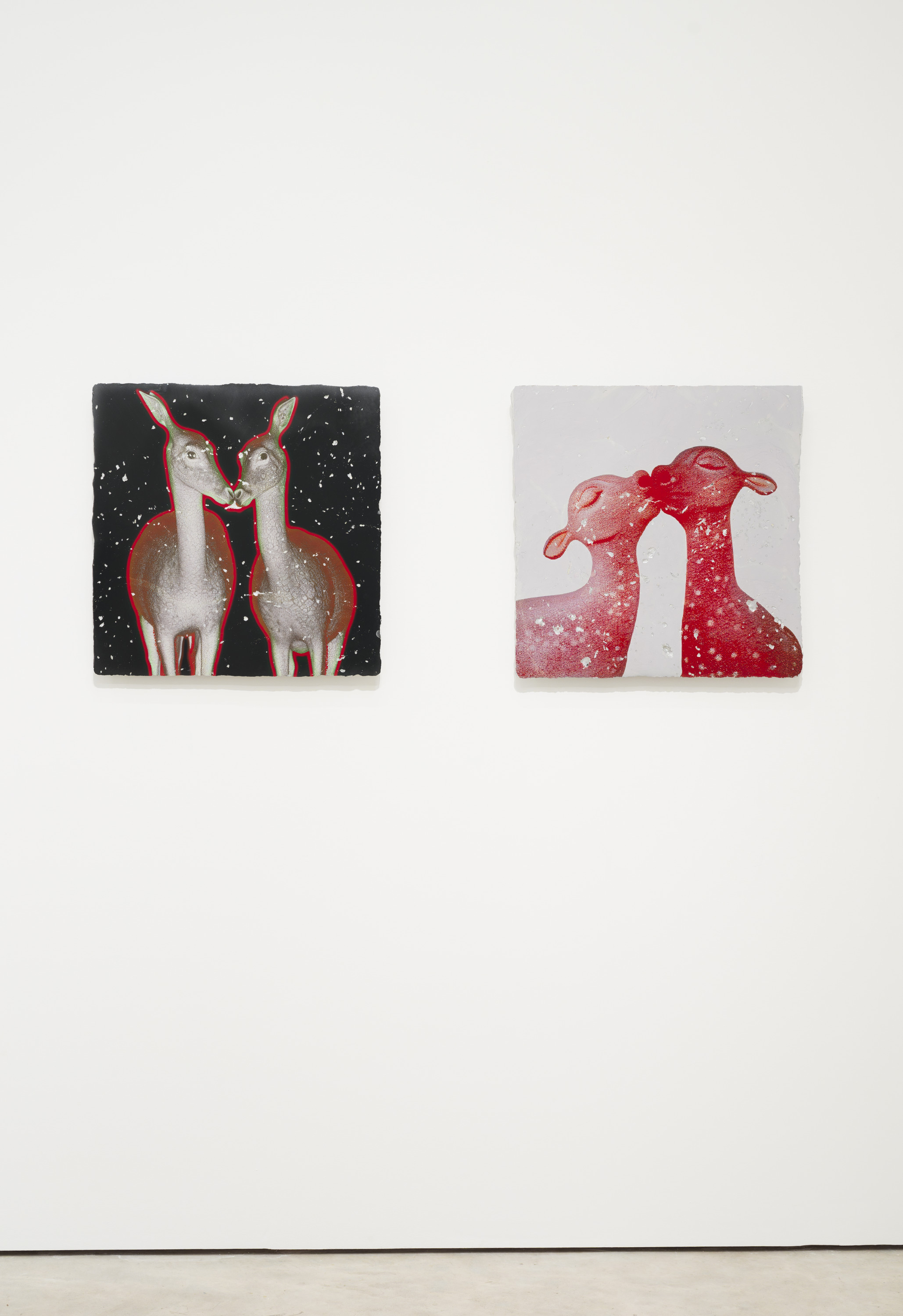
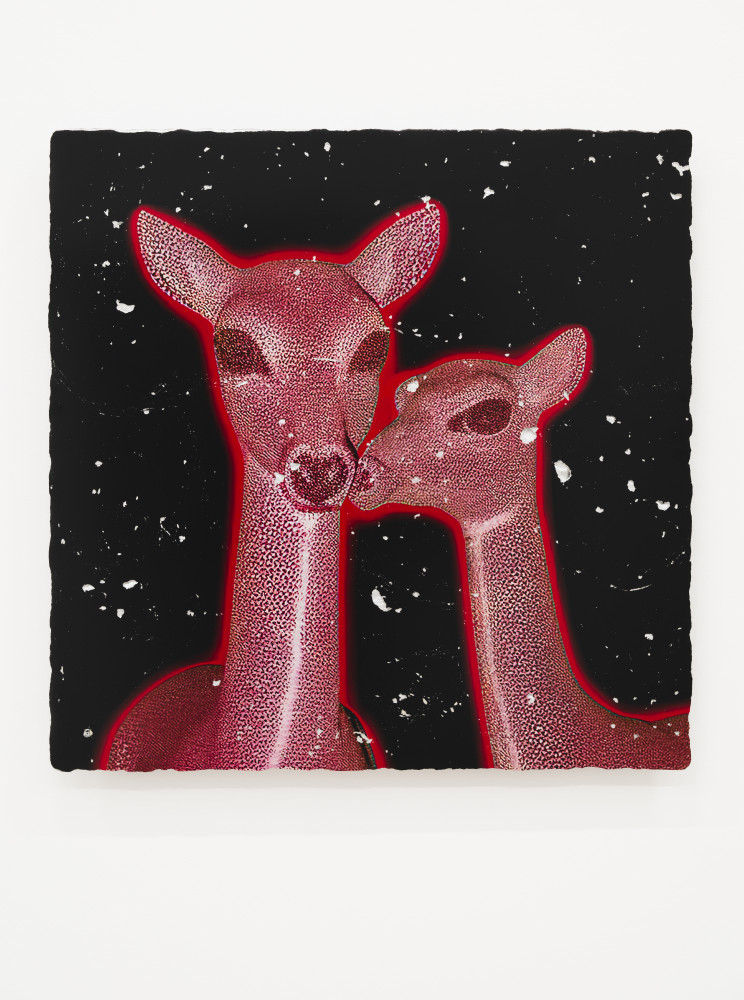
'Earthware (Random Forest, Deer Kiss 03)'
UV print, epoxy clay, nail polish, aluminium frame 60×60×3cm 2023
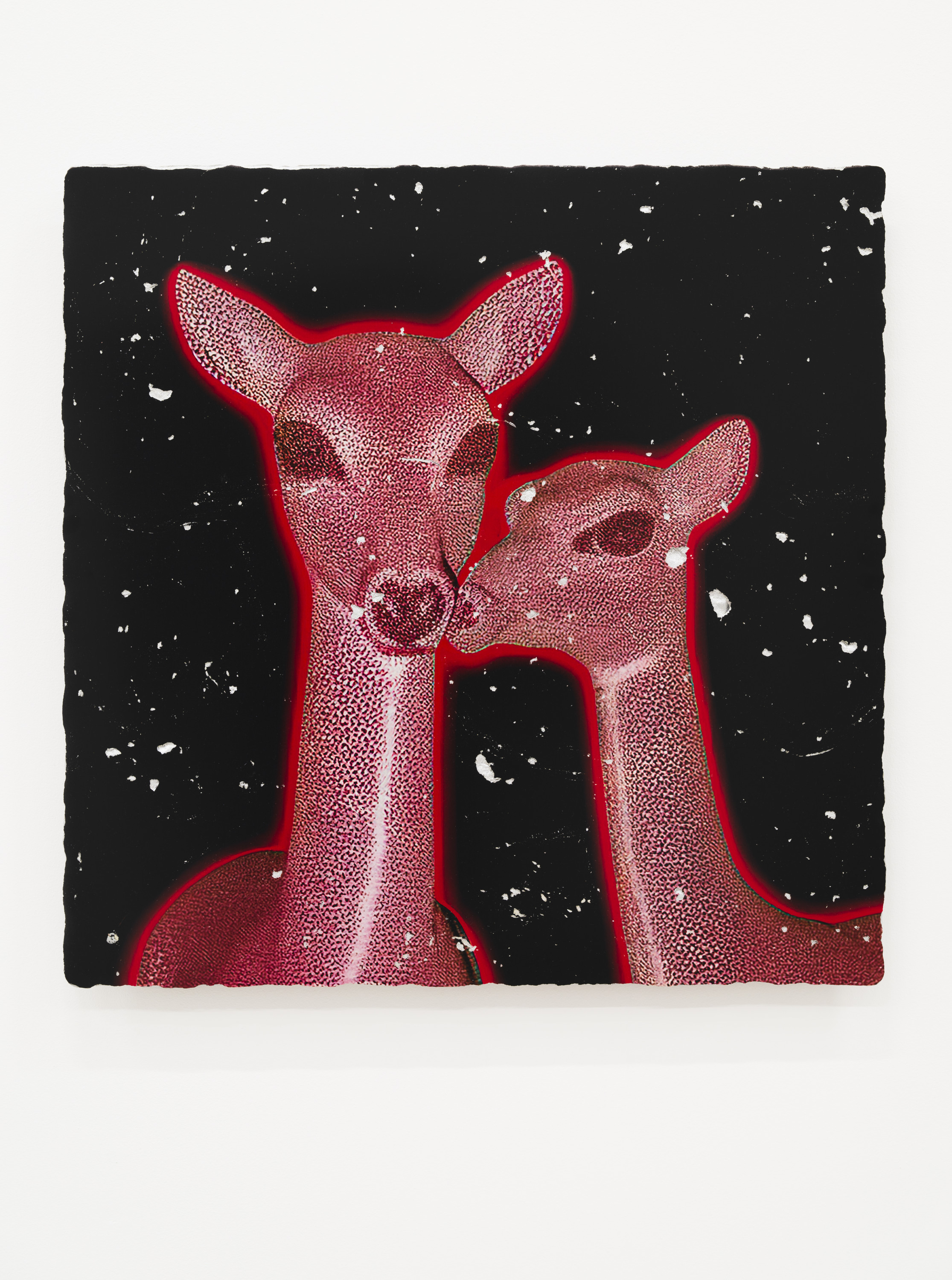
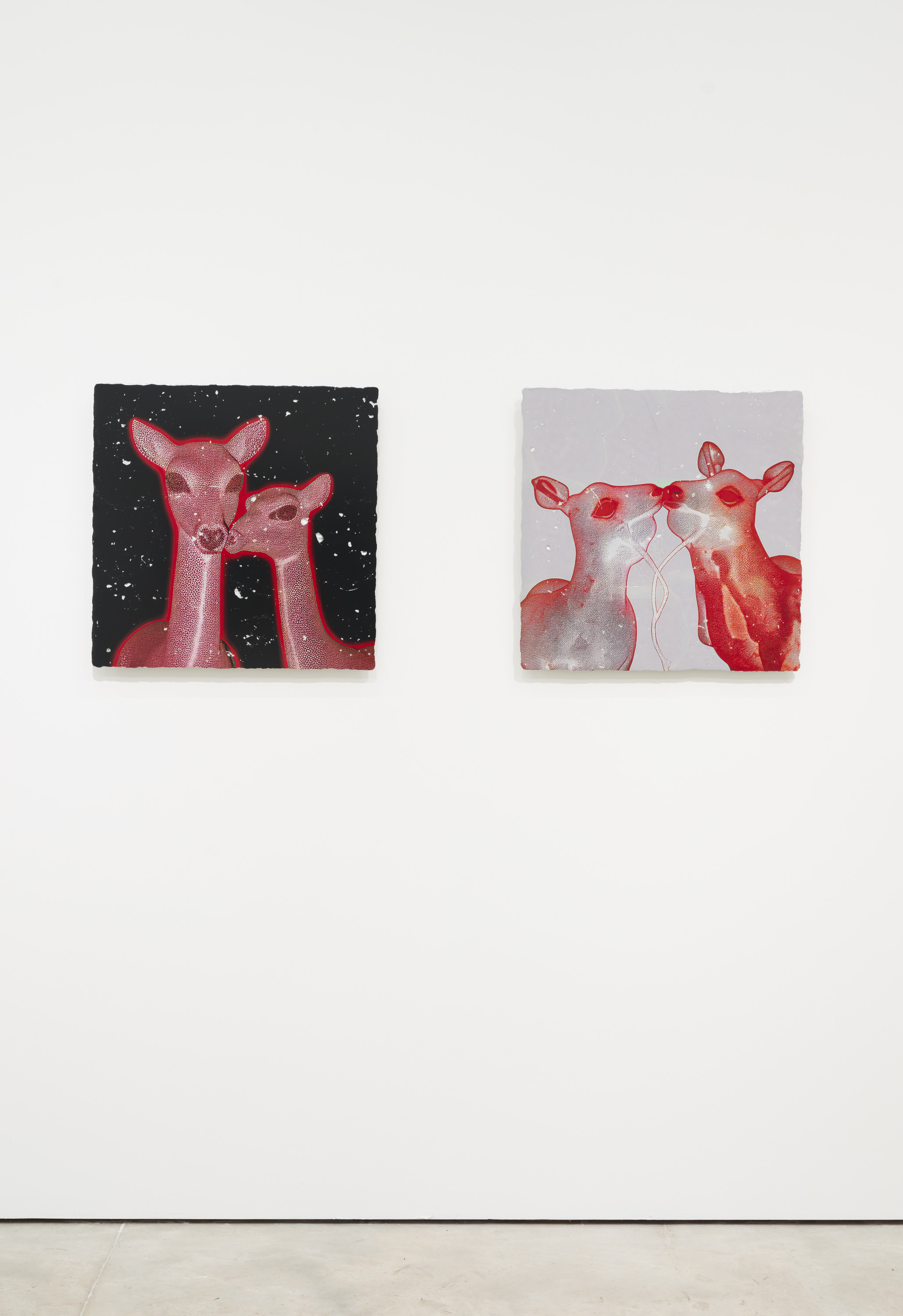
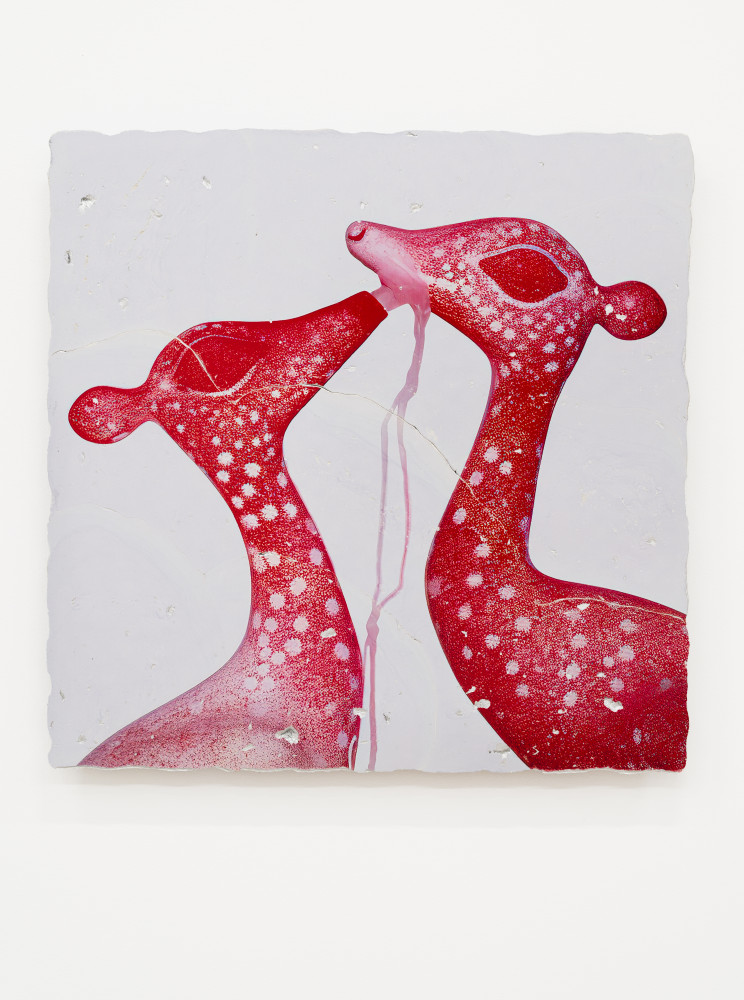
'Earthware (Random Forest, Deer Kiss 04)'
UV print, epoxy clay, nail polish, aluminium frame 60×60×3cm 2023
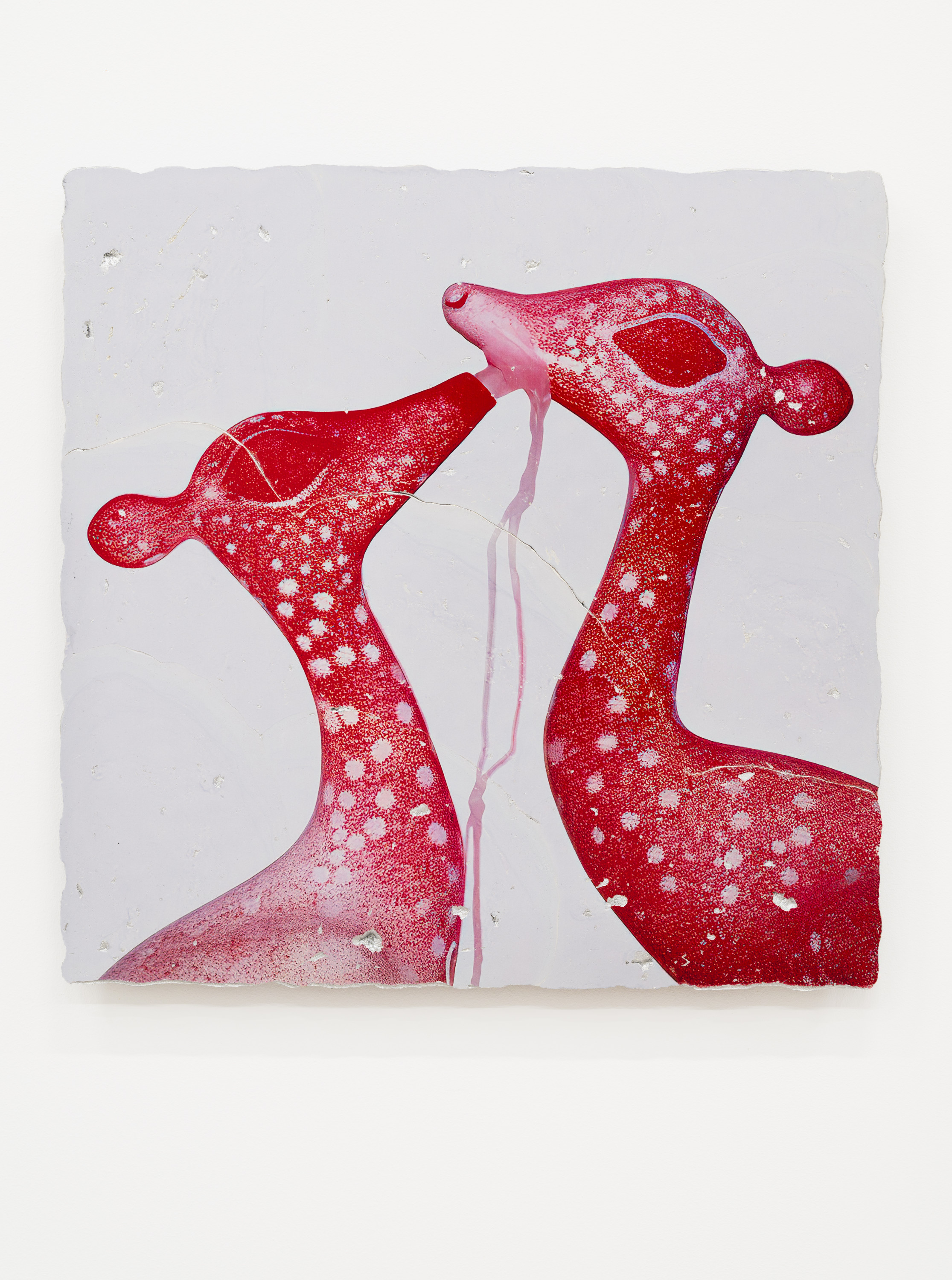
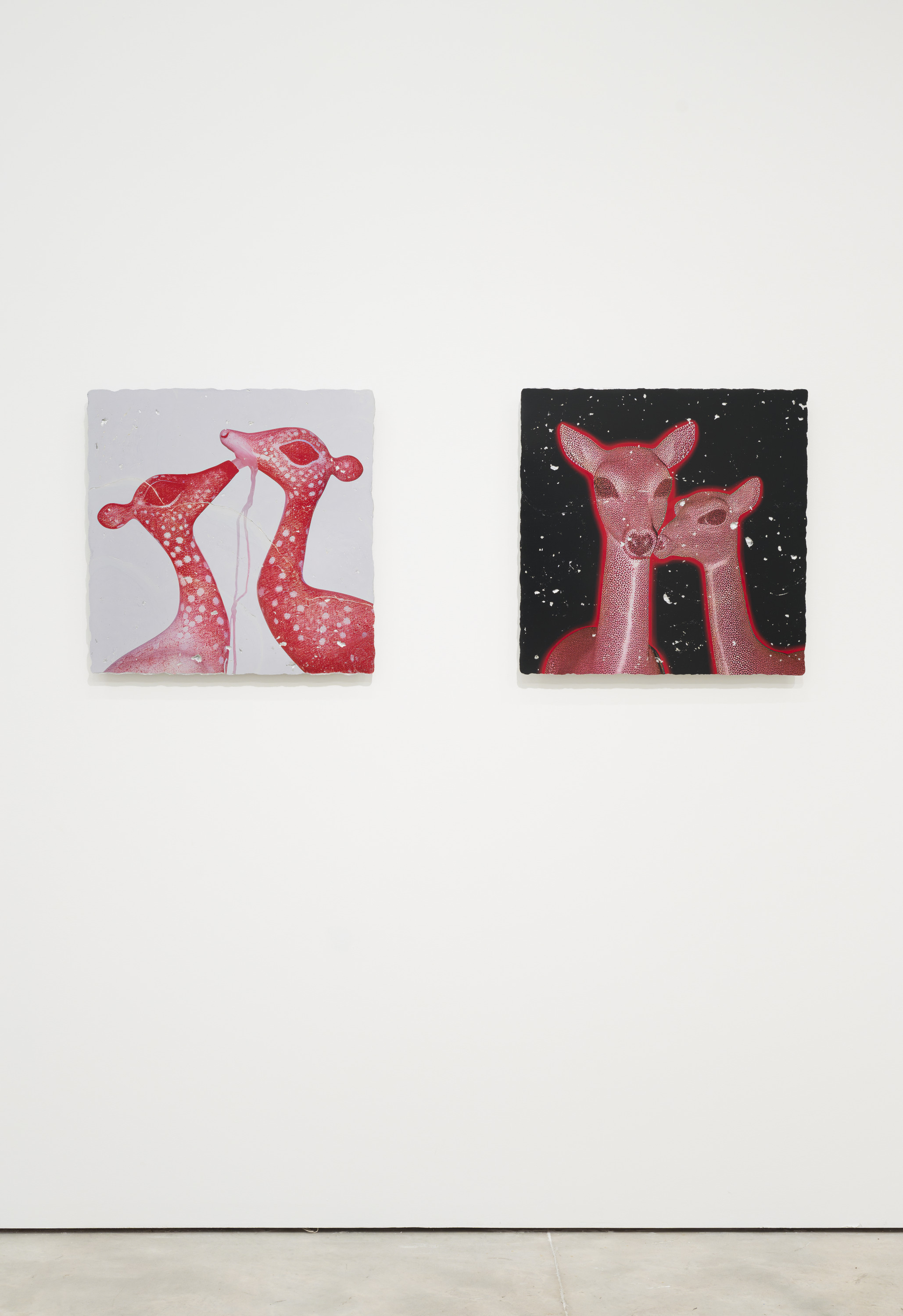
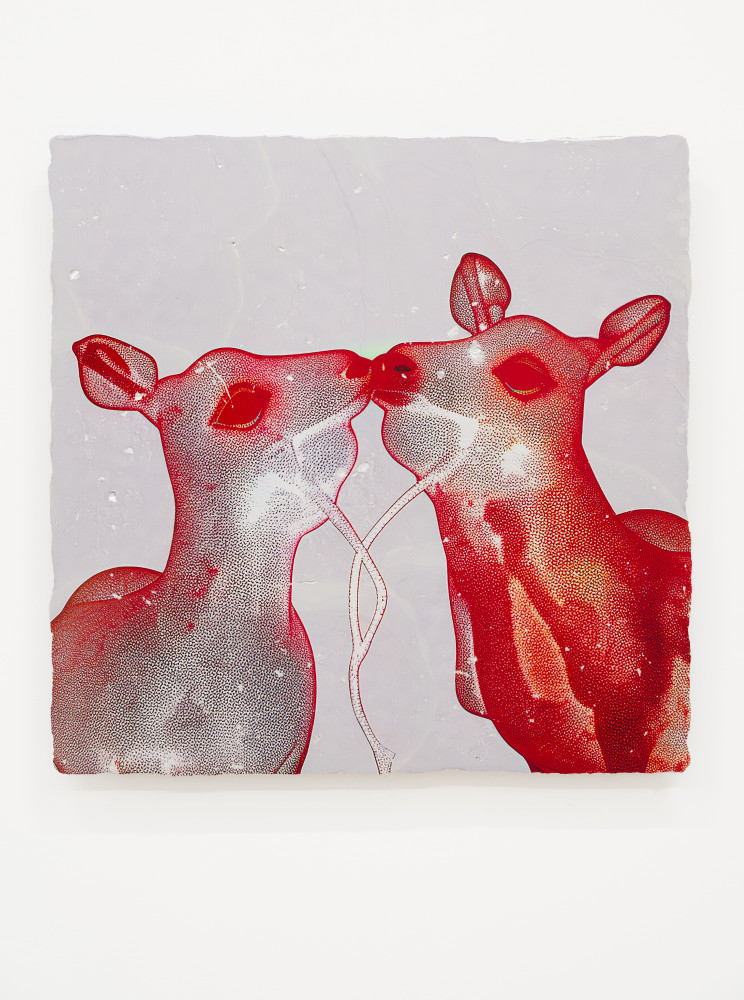
'Earthware (Random Forest, Deer Kiss 05)'
UV print, epoxy clay, nail polish, aluminium frame 60×60×3cm 2023
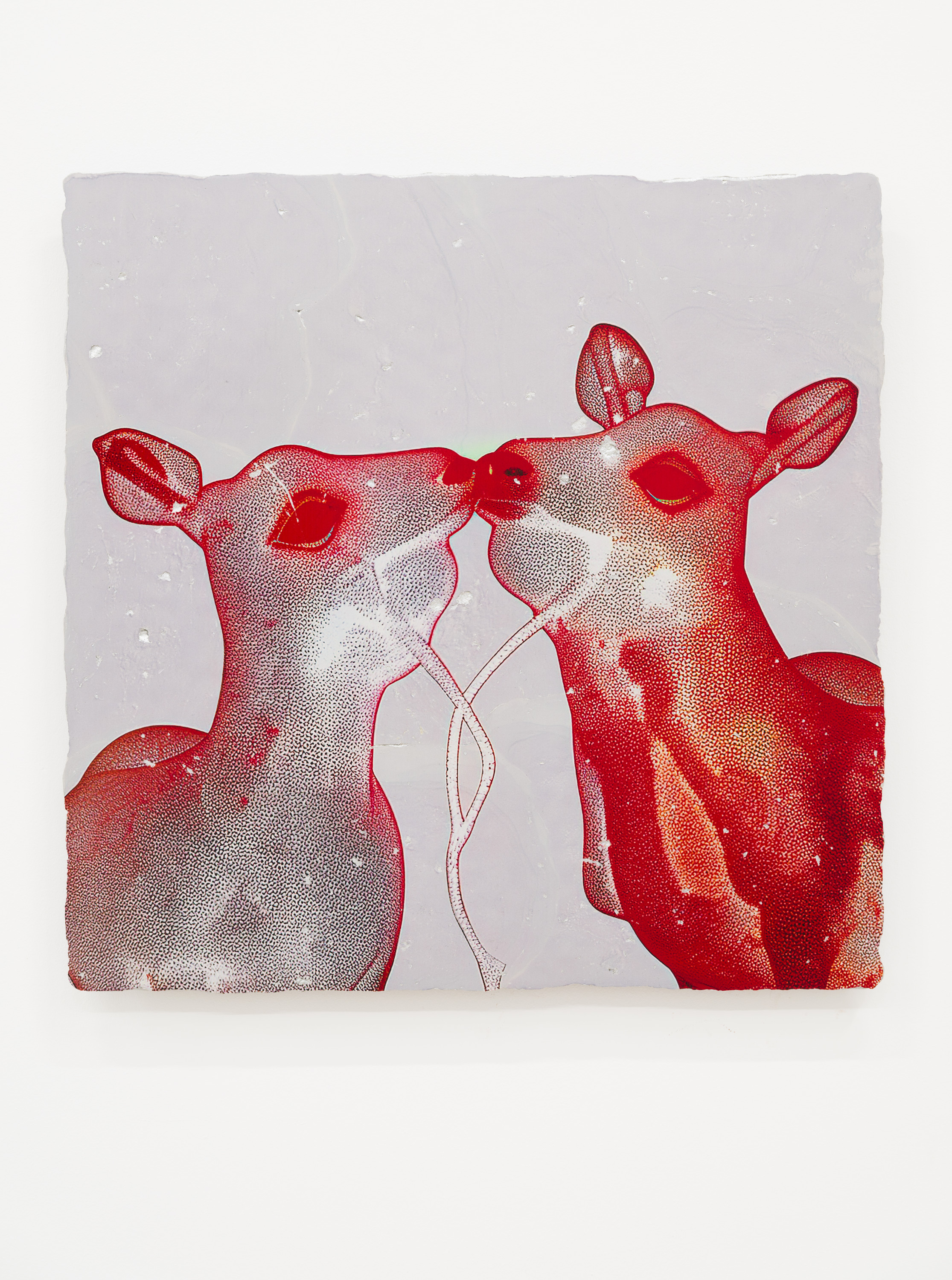
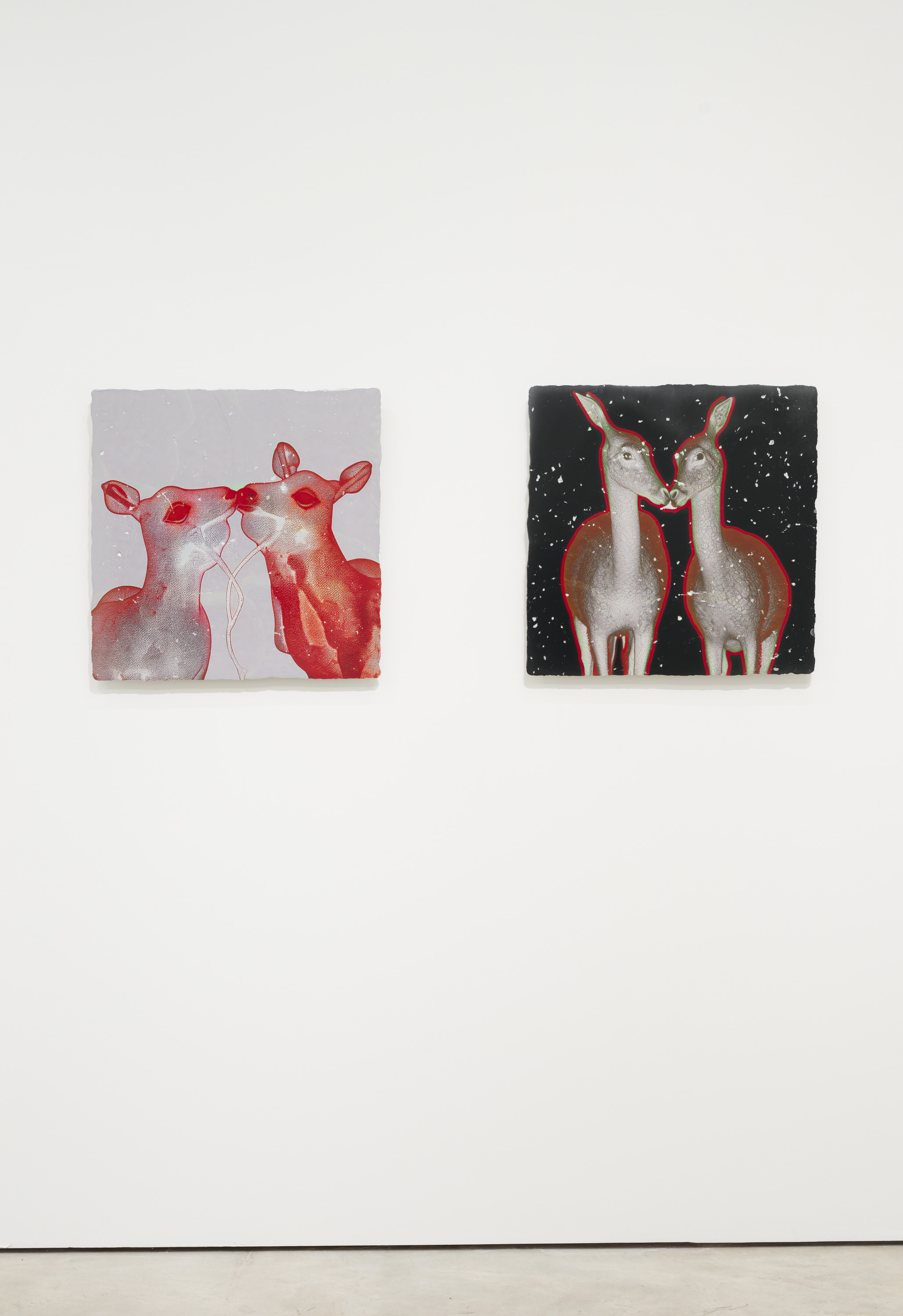
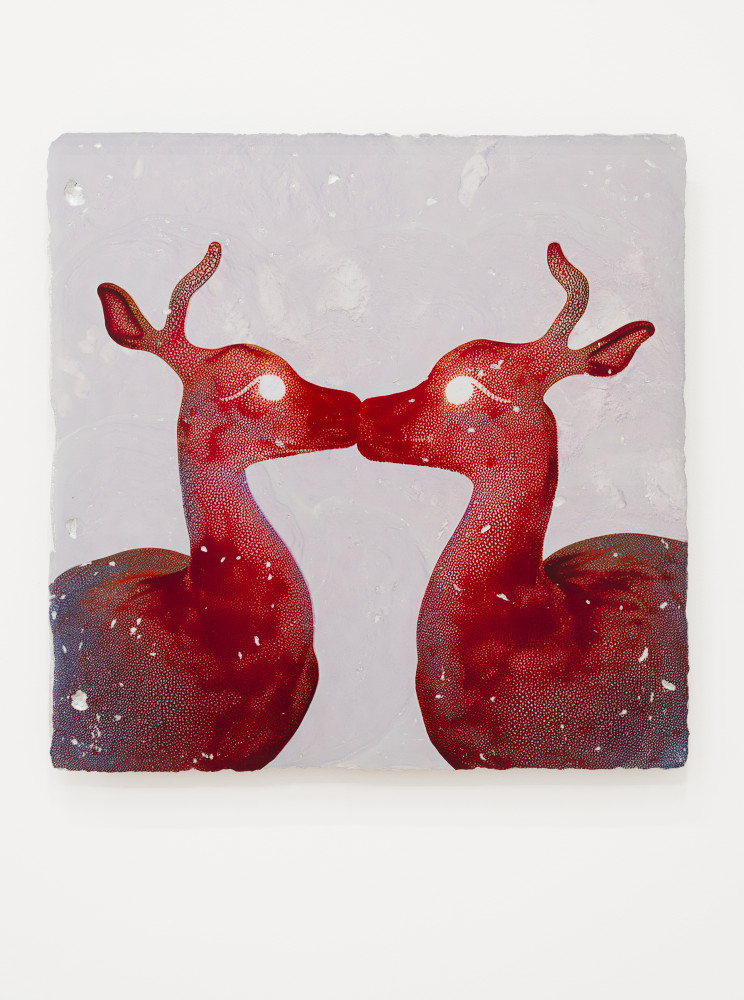
'Earthware (Random Forest, Deer Kiss 06)'
UV print, epoxy clay, nail polish, aluminium frame 60×60×3cm 2023
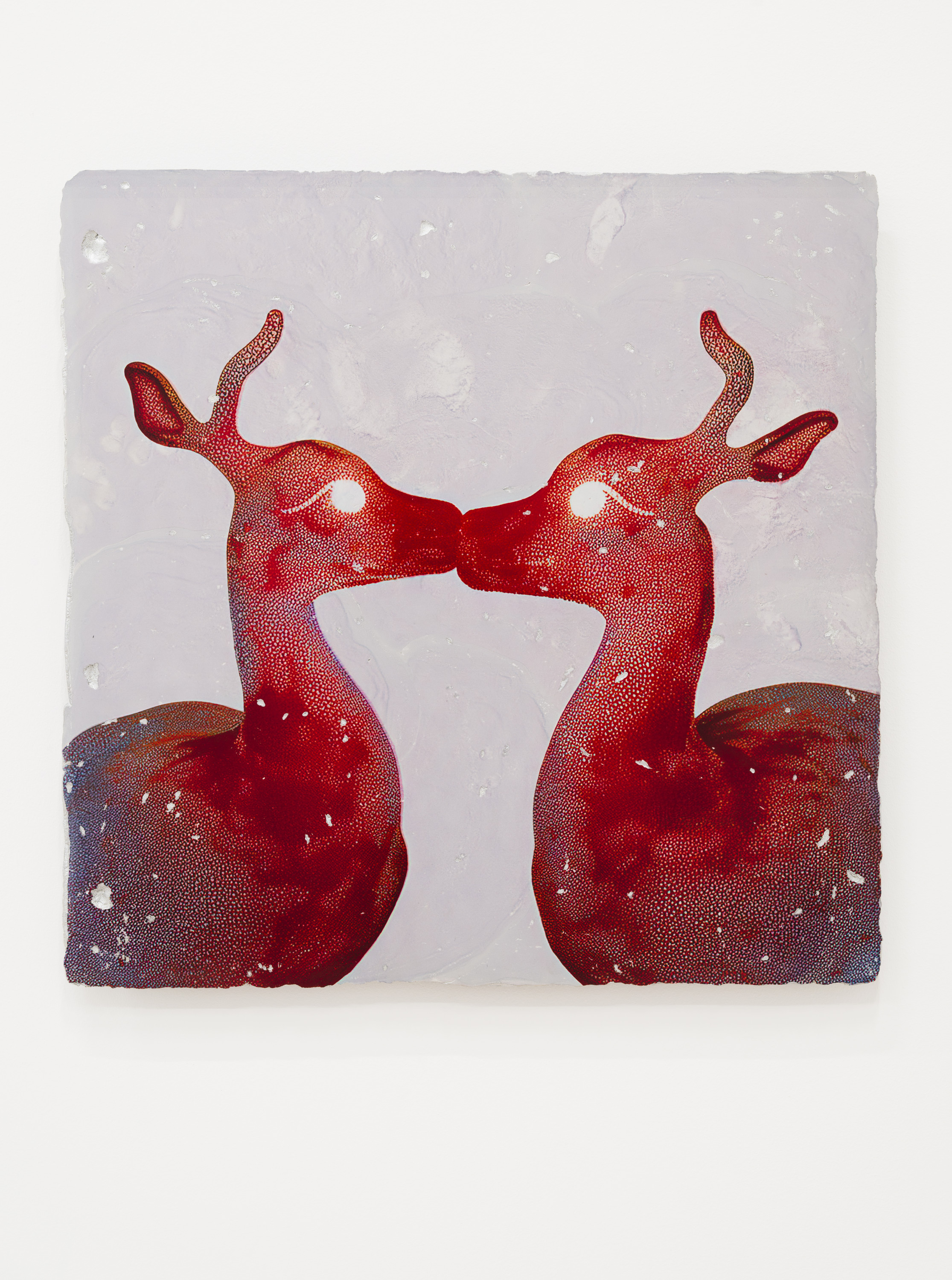
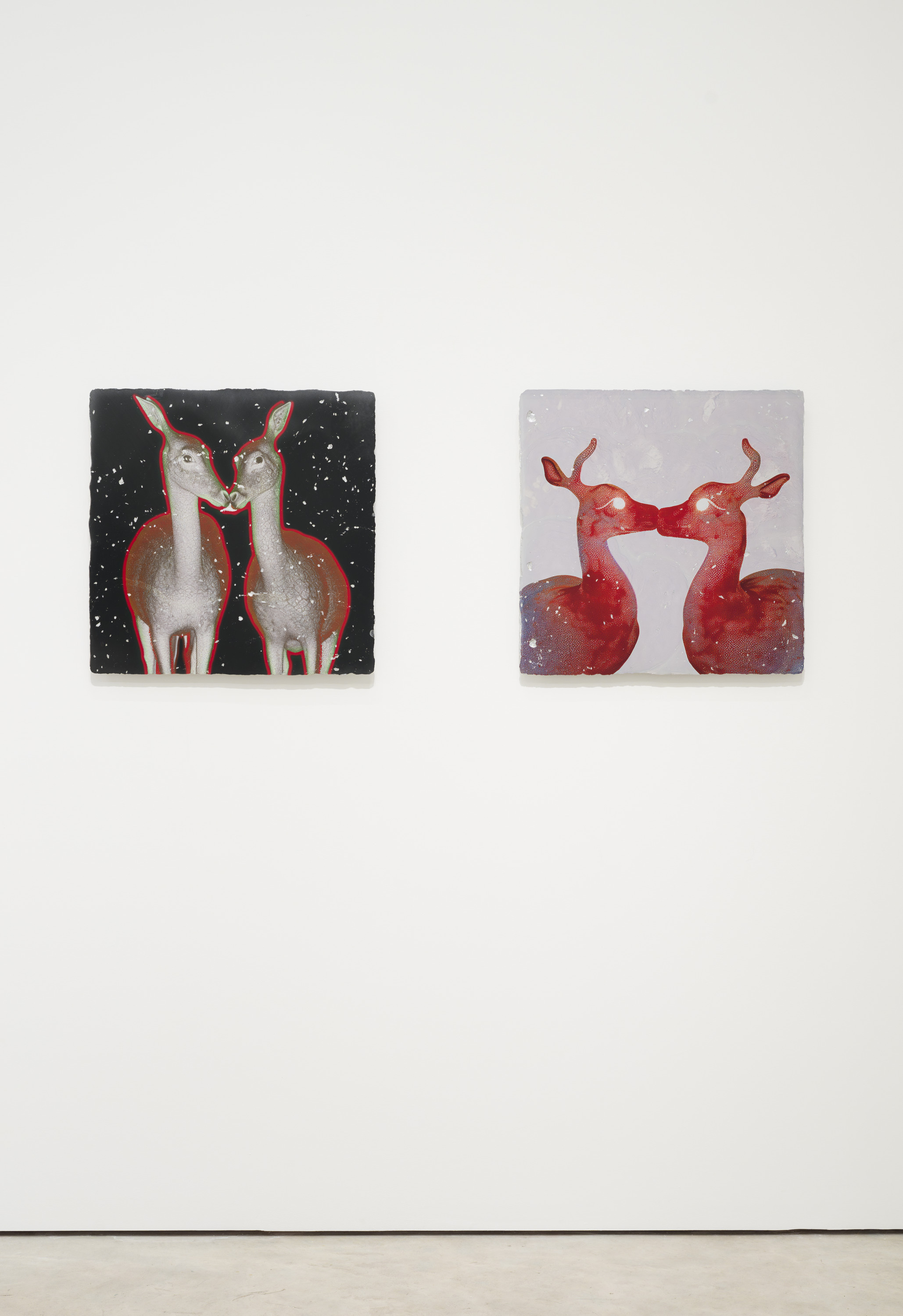
installation views
View: ,Juhuslik Mets / Random Forest / Случайный Лес
In a grove of decision trees, quiet, vast,
Each node a query, each leaf, contrast.
Bundled in groups, they reach for the light,
Pooling their wisdom to make guesses right.
They vote in whispers, a collective soul,
Averaging answers to achieve a goal.
Though each one's knowledge is but a part,
Together they form an ensemble's art.
In the forest's heart where randomness lay,
The paths diverge in a complex way.
Features are sampled; splits are made,
In this game of statistical charade.
Yet out from the chaos, clarity soars,
A verdict that's wiser than ever before.
A Random Forest, both wild and grand,
Making sense of the data, like lines in the sand.
Random Forest is Katja Novitskova's first solo gallery exhibition in Estonia. This branch of her new body of work deals with themes of nature as datasets, computational and biological mutation, machine vision and world-building, as well as the emotional connection between beings that goes beyond the borders of mathematical models. All the works in the exhibition present either a different degree of synthesized nature or images of nature. Random Forest refers to one of the essential algorithms used in machine learning, and it is also a trigger for poetic interpretation that Novitskova uses as her framework for the exhibition.
In this exhibition Novitskova presents two sculptures of mutant deer-like creatures kissing. These works are an endpoint for various stages of translation – from an automatic wildlife camera photo of two deers kissing, which Novitskova used as source material; to image-generating algorithms that created the variations of the image; to digital 3D-models; to intuitive artist studio craft processes. The sculptures are made primarily with glass-like polyurethane resin, red pigments and an admixture of natural stones and aluminum wire.
Developing a similar motif is a series of small synthetic clay wall-pieces of deer-like beings kissing. Each one is clearly a variation on the same source, attempting to capture and recreate a real moment that happened between two deer some time ago in some forest at night.
The other large synthetic clay works, from the already established Earthware series, feature actual images taken by automatic wildlife cameras, which Novitskova found in several different datasets from nature parks around the world – an albino deer, an antelope looking at wildfire and a one-eyed wolf. The datasets these images originate from are not meant to be seen by many people, but rather exist as data points within environmental research projects, and any beauty in them is an unintended byproduct of their instrumental purpose.
Novitskova digs through thousands of these photographs in search of images that show the world in an intimate, mystical way and reflect the relationship between the camera, the animal and the observer (human or machine). Each piece has an additional layer added to it – either a human-like stick figure generated by an algorithm from a series of cave art drawings; or a short poem from a scientific paper about machine learning; or a red filter. Breaking away from the formula, one work features a herd of horses running on a beach with a large amount of thin red lines covering the image – an example of visualized optical flow, a mathematical approximation of motion vectors in a still image.
Finally, echoing the deer sculptures, one finds two small arrangements of mushrooms growing, made with polyurethane resin. Optical flow-like vector arrows in the same size as the mushrooms are ‘growing’ out of the mycelium.
The world presented in the exhibition is a haunting place where synthetic echos and computational models are outgrowing their biological references, and the fleeting magic of an emotional moment between living things is transformed into a never-ending process of pattern formation.
The exhibition is supported by the Cultural Endowment of Estonia.
Thank you: Punch Club